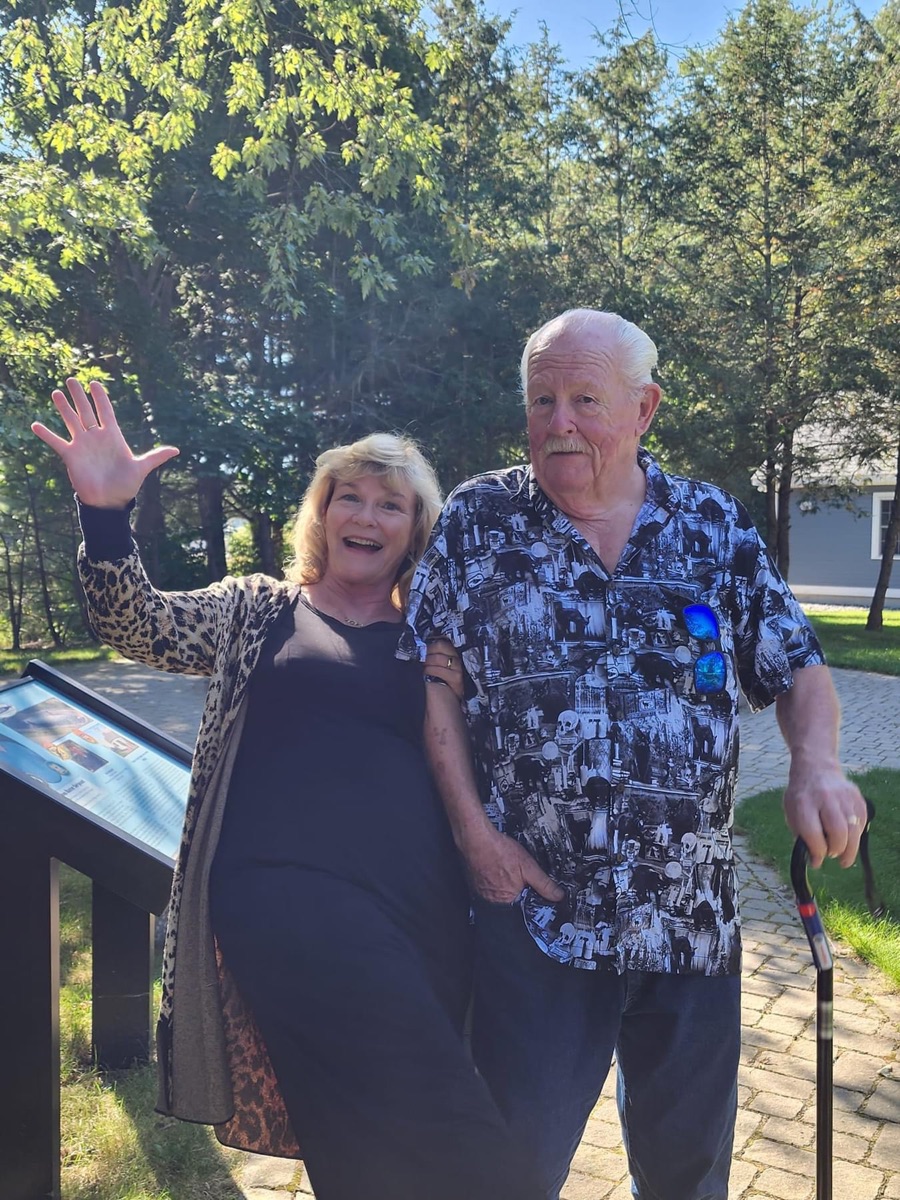Page 9 (10/4) - Lunch And To The USS Albacore!
Mark had never been to the Albacore Museum; here we come! We designed the day so we could have tea at the B&B before having a family get together.
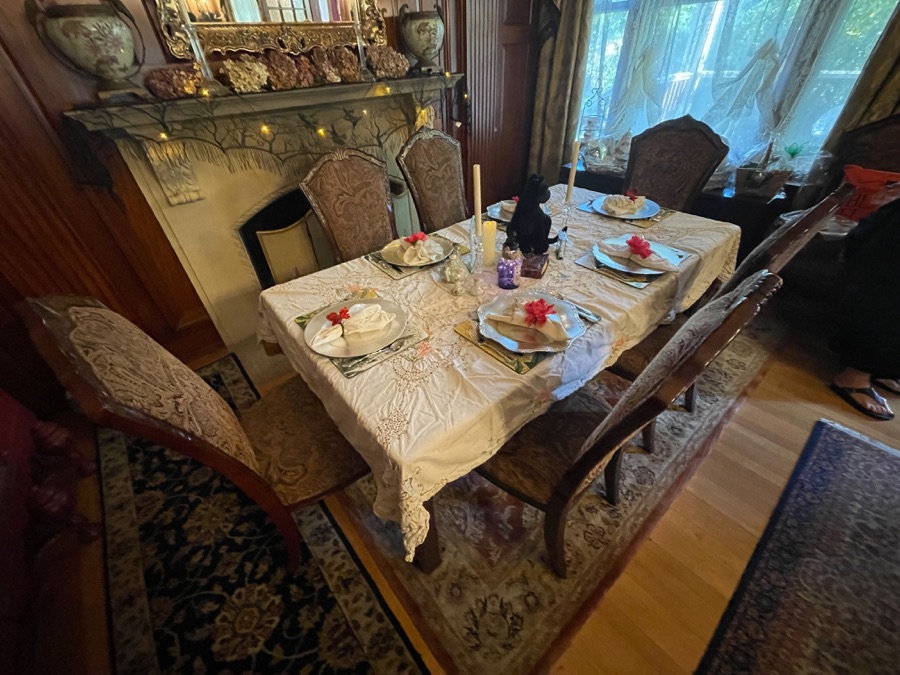
We had breakfast at the hotel

Binx joined us! He helped us make the spells correctly!
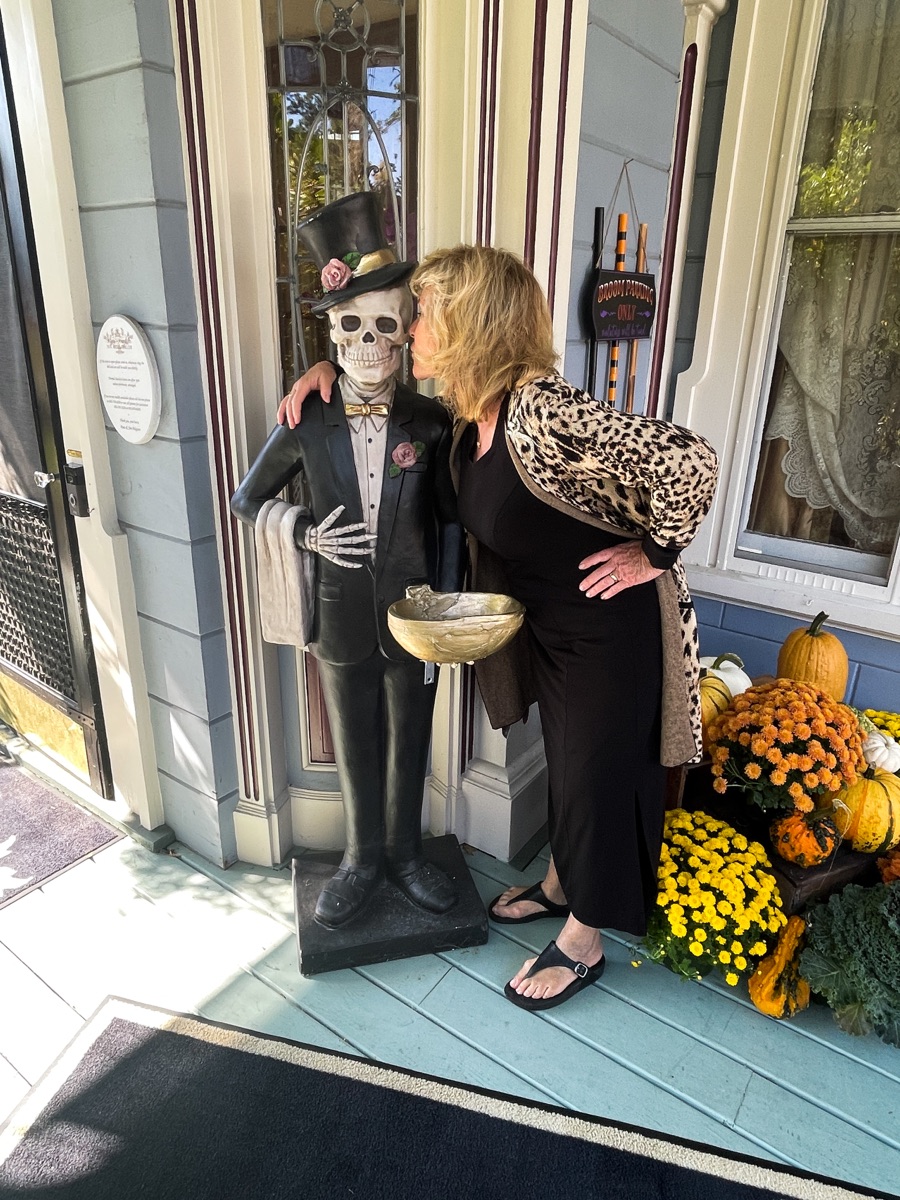
Mary met the doorman!
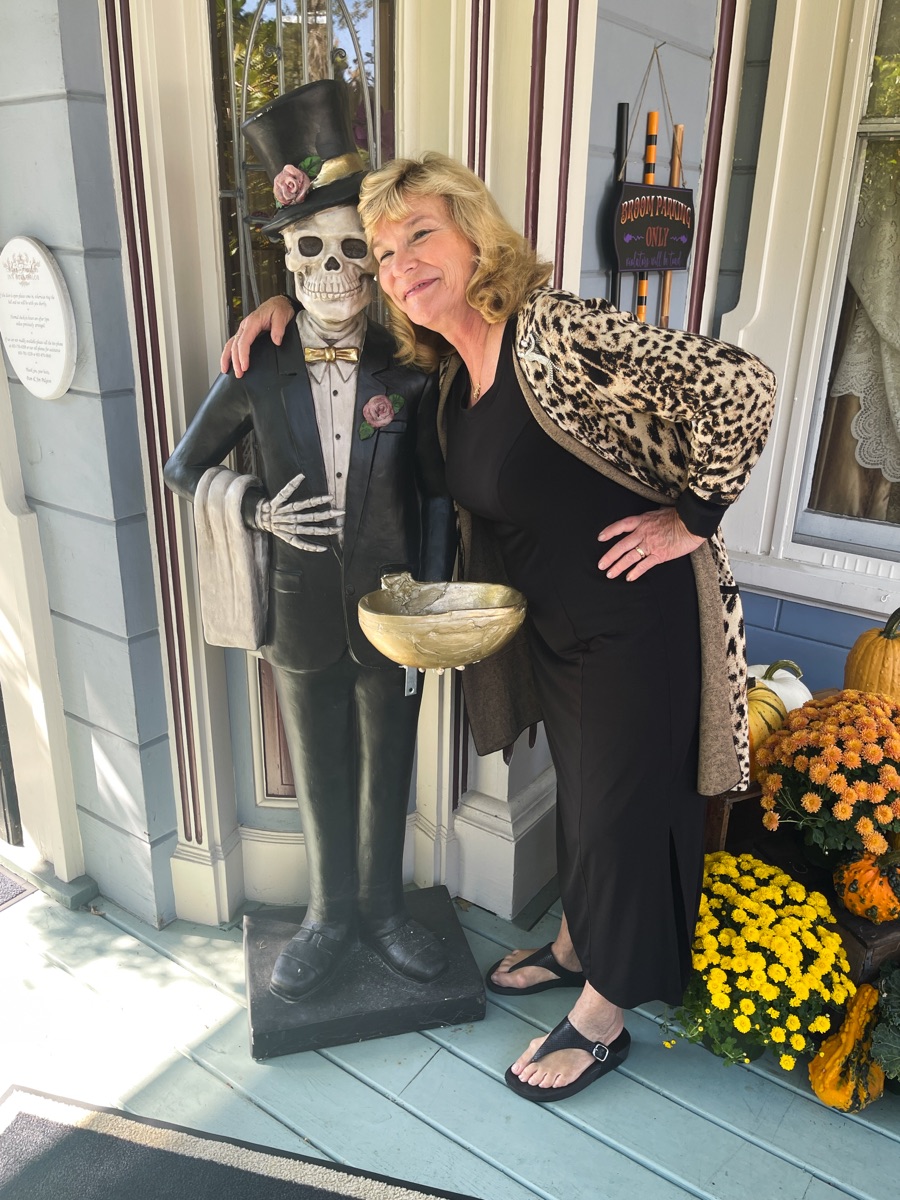
The struck up a relationship!


Bright and shiny in the sunlight!
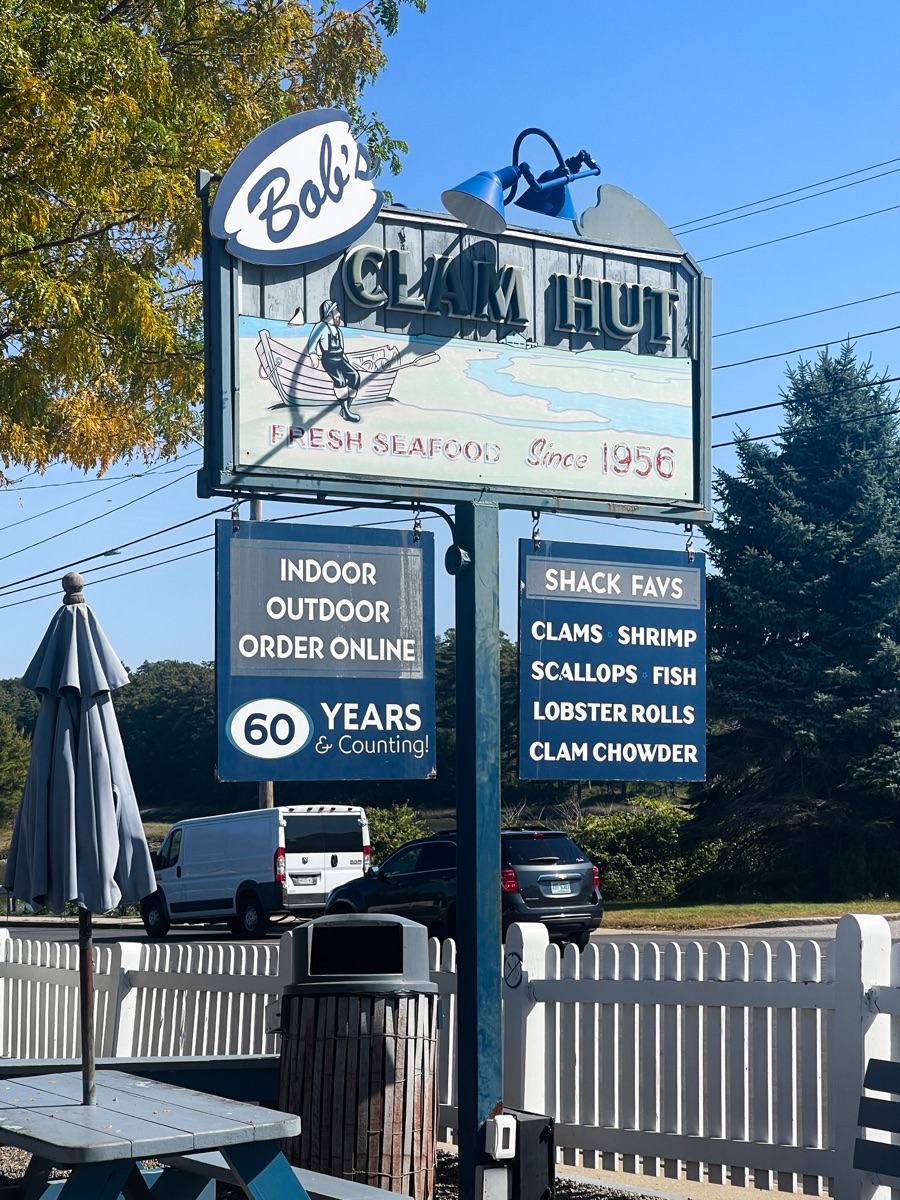
OK tummy, you can do this!
Did You Know? - Bob's Clam Hut has been the golden fried standard to locals and travelers for decades, serving up the best that coastal Maine fried seafood has to offer since 1956. Fast, crispy and fresh off the local docks, a meal at Bob's is a Maine bucket list essential.
At Bob's, our lobster, clams and fish are delivered fresh daily. Picky with our clams, we only use "specials," clams which are hand-selected for consistent size and quality. We're also known for our original recipes, including our famous tartar sauce. Customer favorites include Bob's New England Clam Chowder, Lobster Stew, the traditional Bob's fried clams, and the Lillian fried clams. Our staff consistently replaces our fryers with clean oil and all dishes are made-to-order.
Bob's has been featured on Food Network's Diners, Drive-Ins and Dives, was named a "Great American Lobster Destination" by USA Today and took a spot on Thrillist's list of "50 Essential Restaurants Every American Should Visit." Coastal Living has also recognized the lobster roll at Bob's as one of the best in the state and Yankee magazine spotlighted the clam hut as having one of "The 10 Best Fried Clams in Maine."
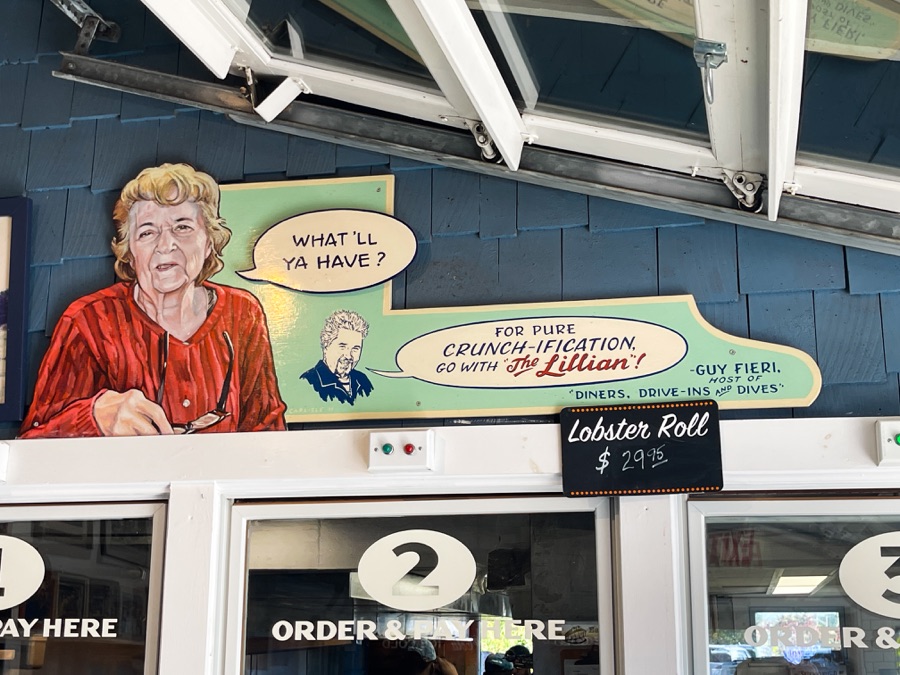
They were featured on TV recently.

We asked for wine; we got someting resembling wine.
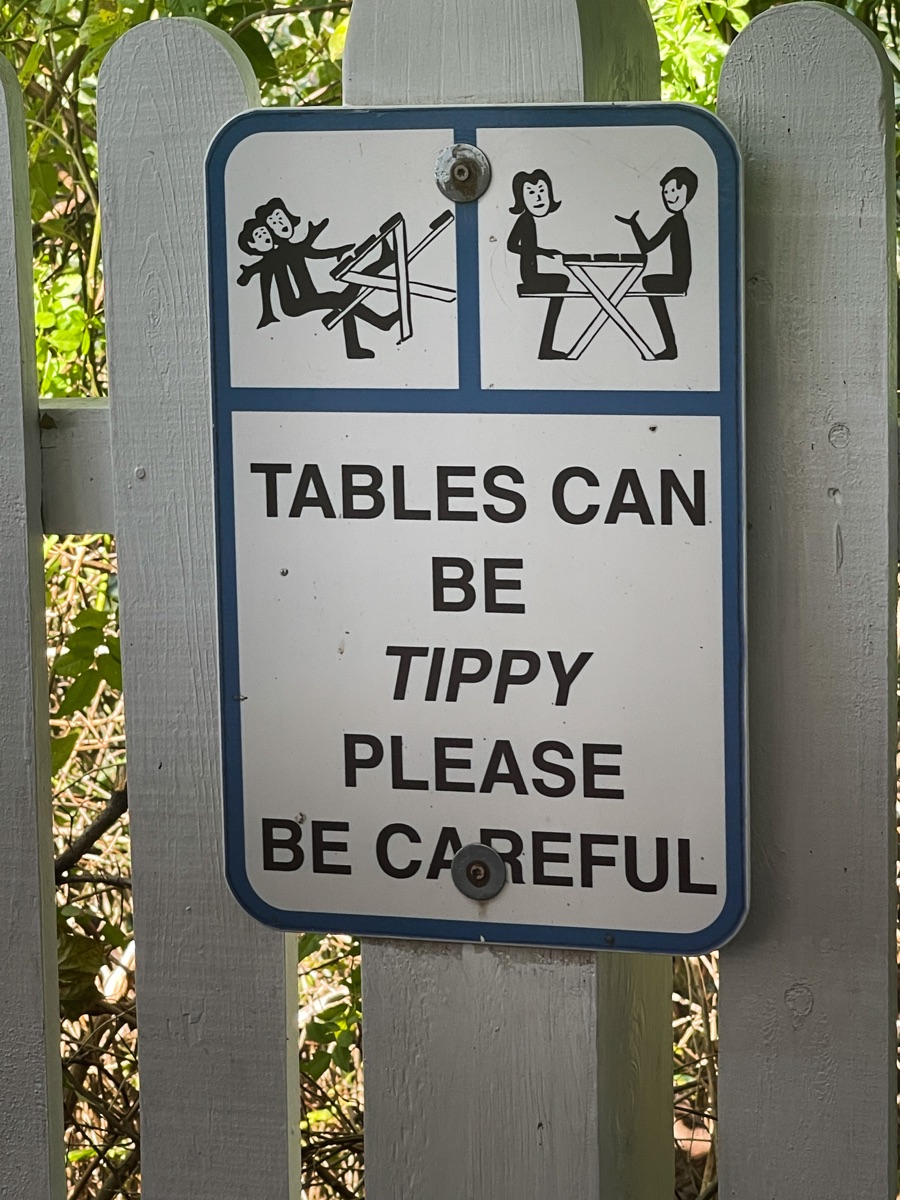
I think it was the diners who were tipsey!
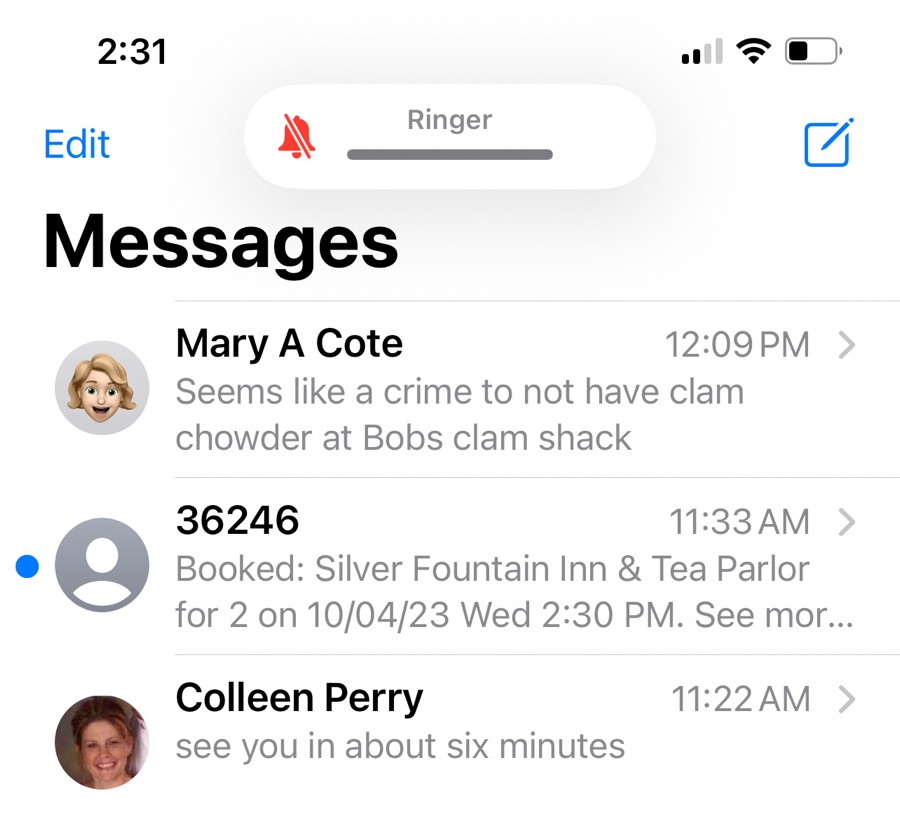
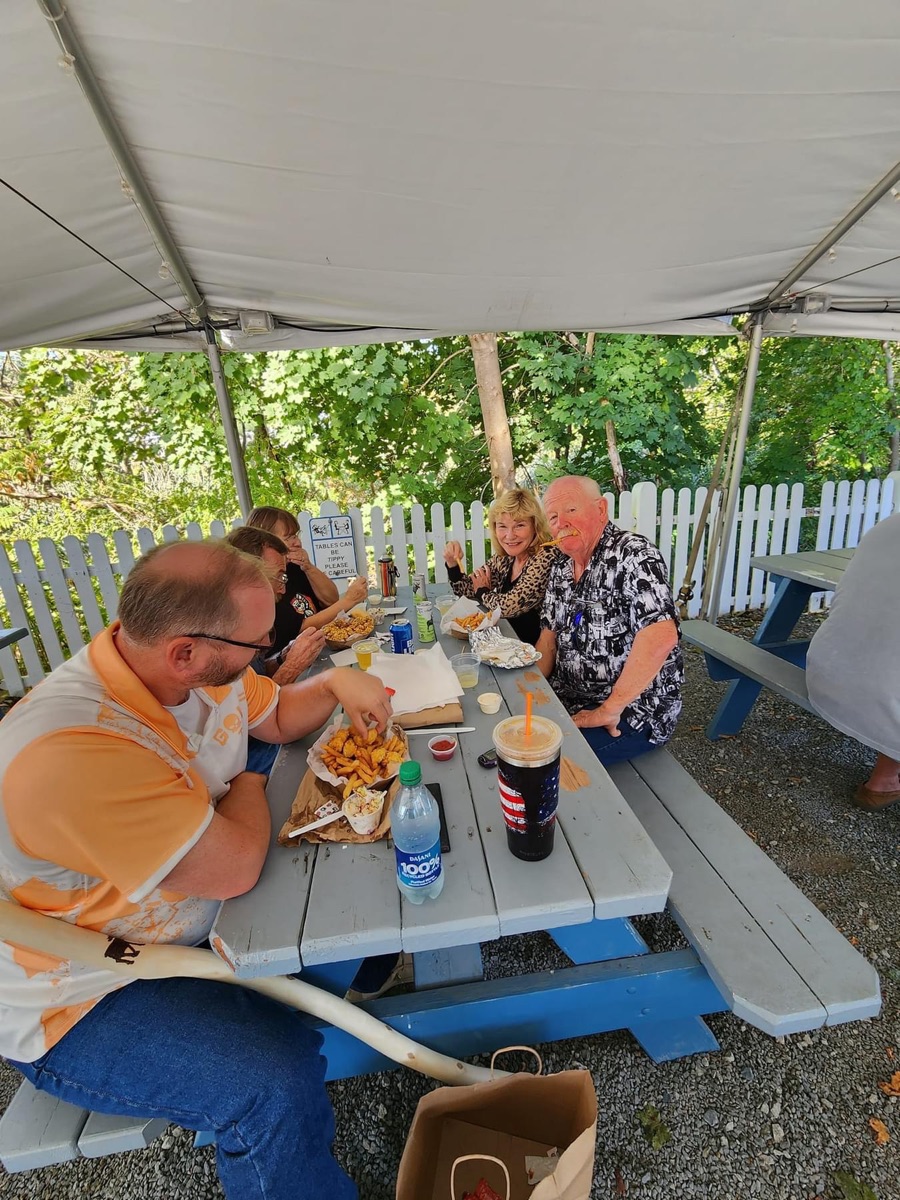
Yummy!

We filled up!

My walrus act is underway.
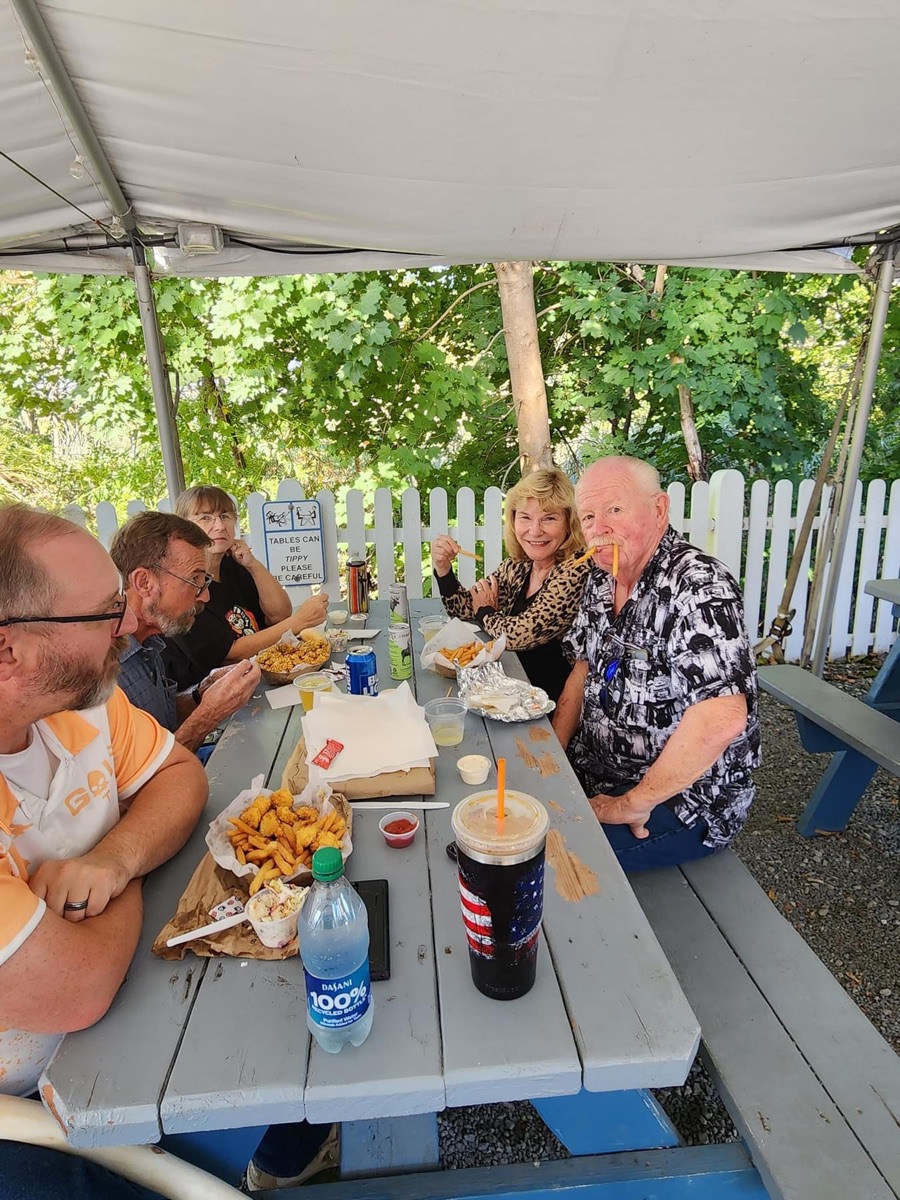
Fun!! Pardon my tusks!

Did You Know? - The USS Albacore is a research submarine, designed by the U.S. Navy to test experimental features used in modern submarines. The Navy tested top-secret features that led to the high-speed silent operation used on modern U.S. submarines.
Today, Albacore has been preserved and is opened to the public Every visitor can go inside and explore this remarkable submarine. You will be able to look through the periscope, explore the control room, engineering spaces, and bunkrooms, and hear crew members tell of things that happened when they were at sea.
Tours through Albacore are self-guided. As you walk through the ship, a series of audio stations highlight Albacore's unique features. Recordings by former crew members tell about daily life and some hair-raising incidents aboard the sub.
The Visitor Center is your starting point for the tour. The Gift Shop offers souvenirs of your visit. The Memorial Garden preserves the memory of those who have served on Albacore and other U.S. submarines.
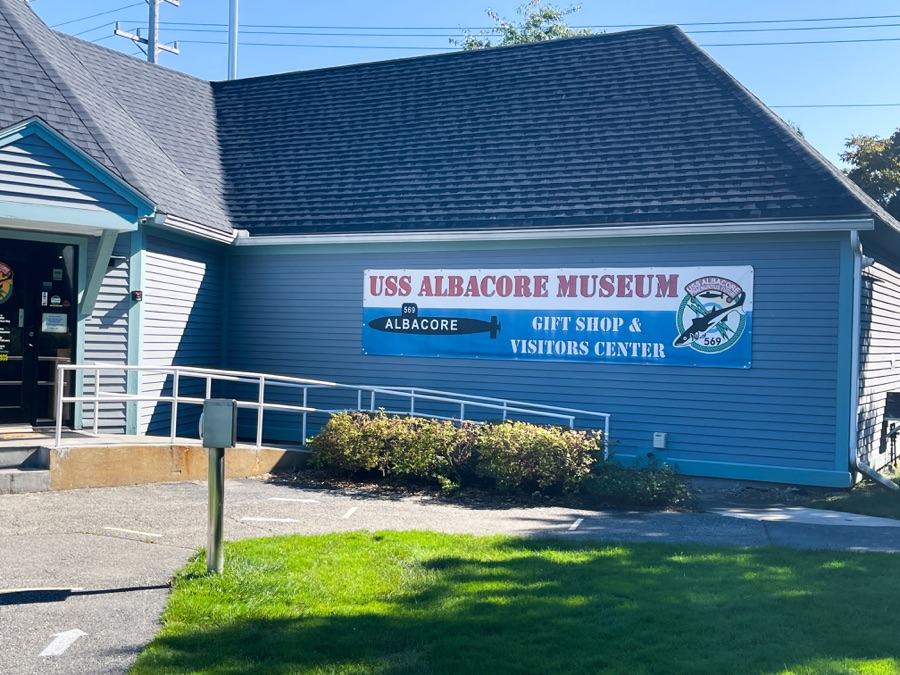
The building was adjacent to the ship!
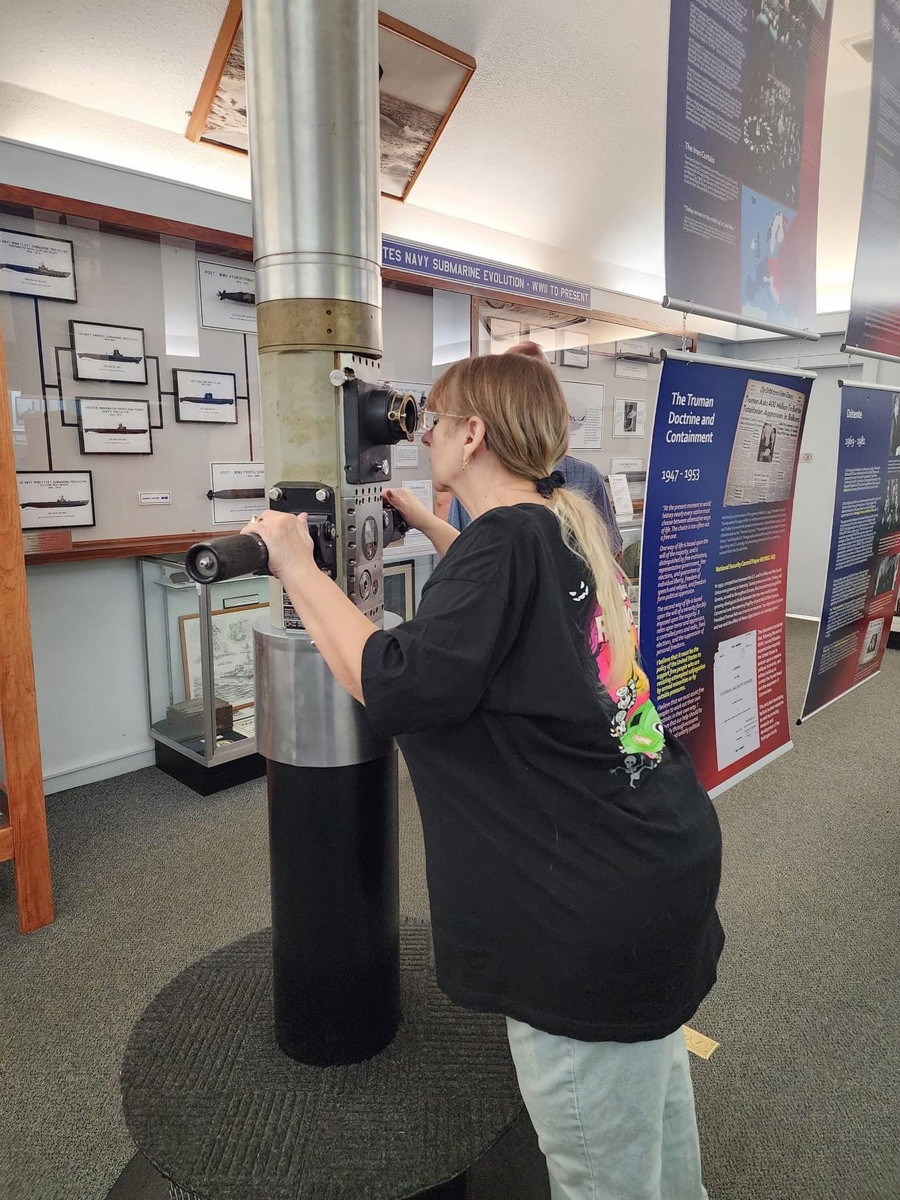
"I see it. " She lined up to sink a chevy on the street outside the museum.

Me Too


It looks safe!
Did You Know? - The first boat known to have been navigated under water was built in 1620 by a Dutchman, Cornelius Van Drebbel. Van Drebbel is said to have developed a chemical which would purify the air and allow the crew to stay submerged for extended periods.
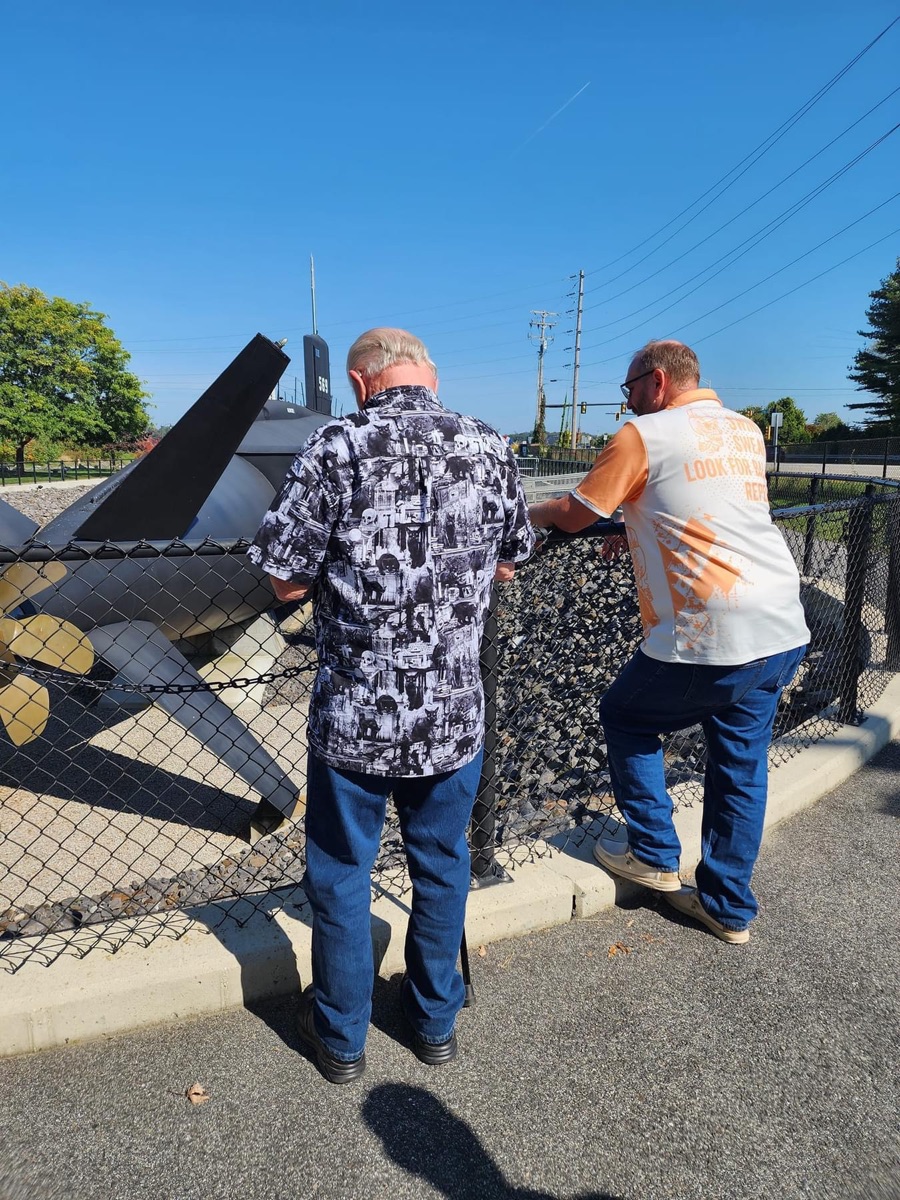
Mark tells stories
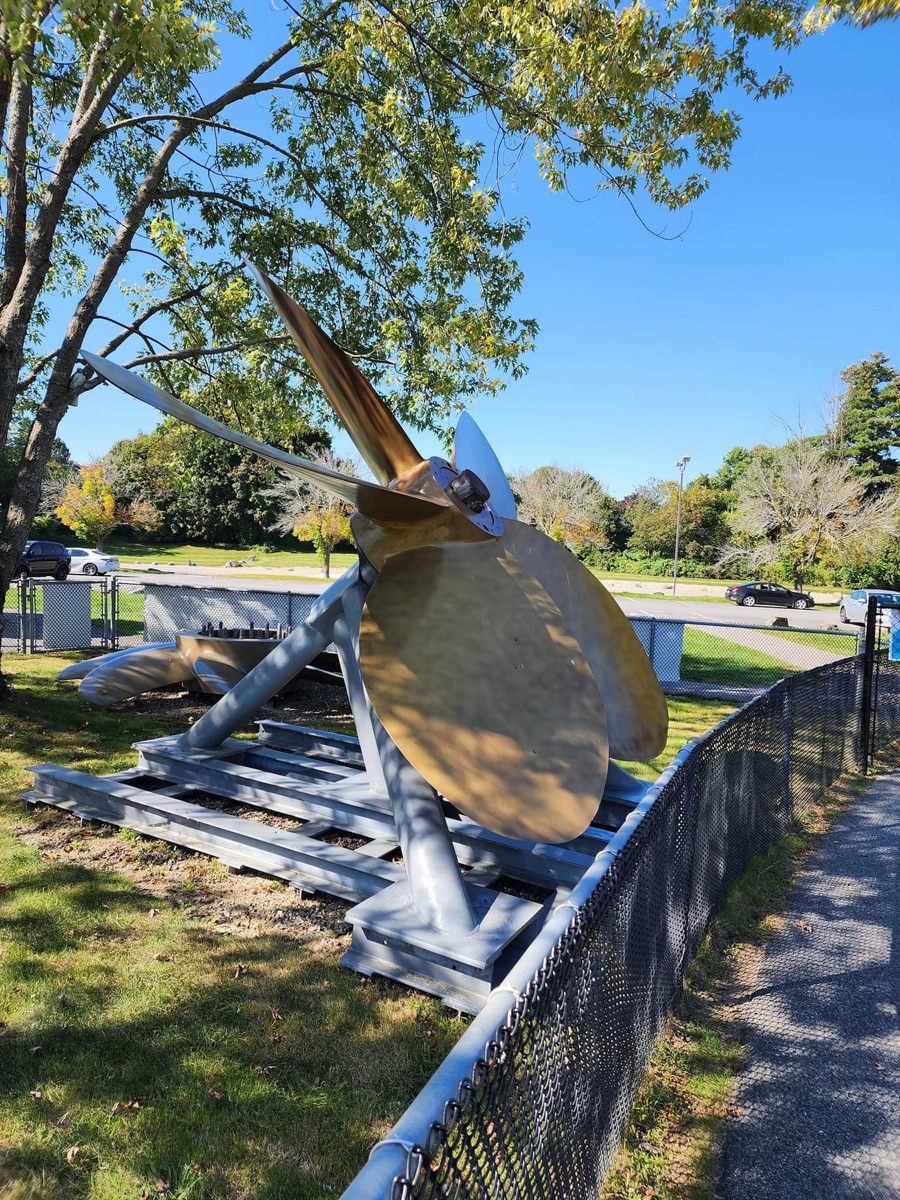
That's a big propeller!
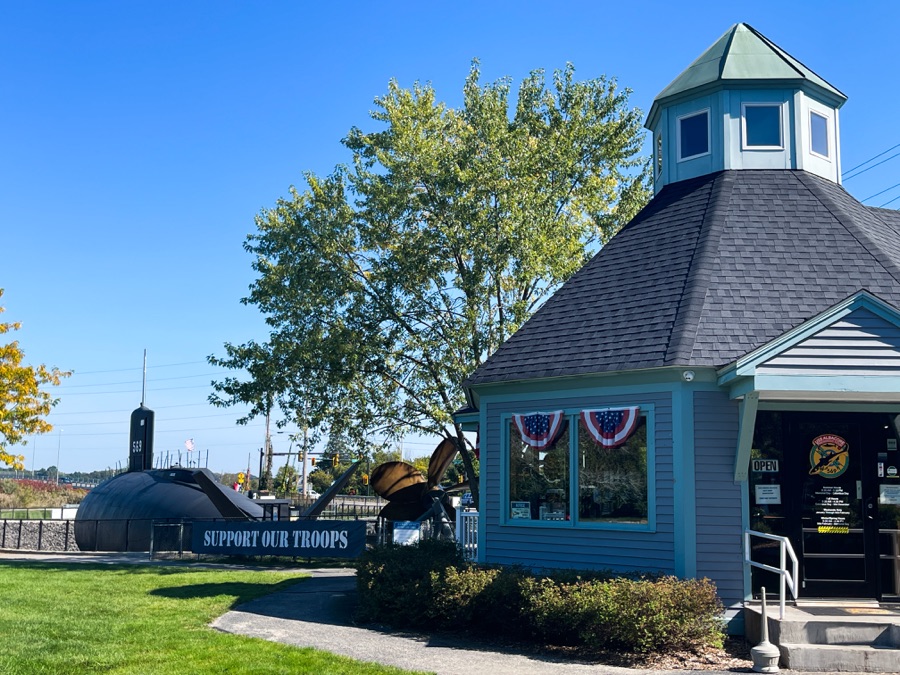
The ship has quite a land journey to get placed here.
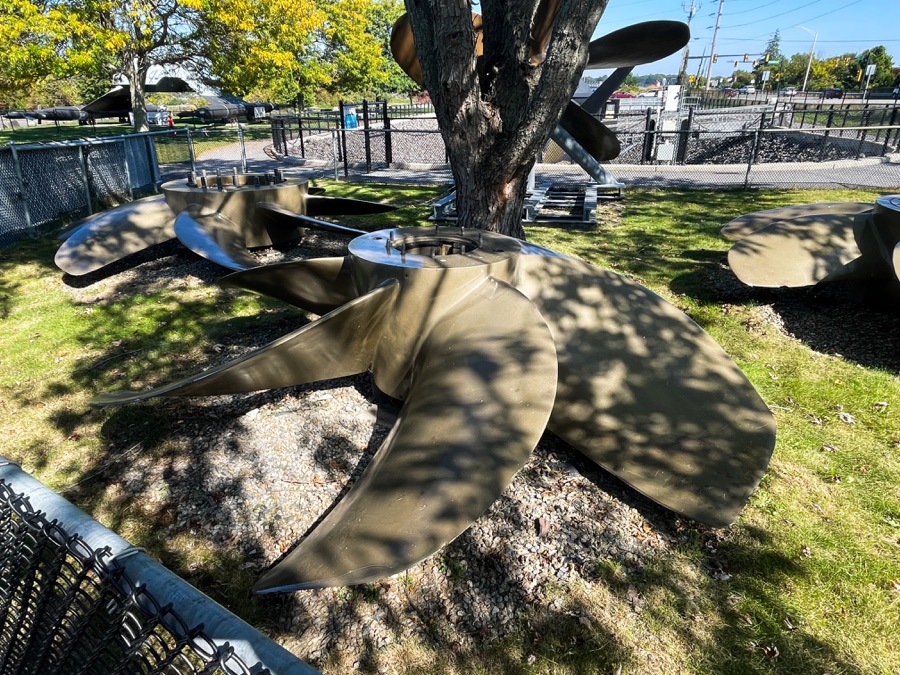
Interesting propeller designs.
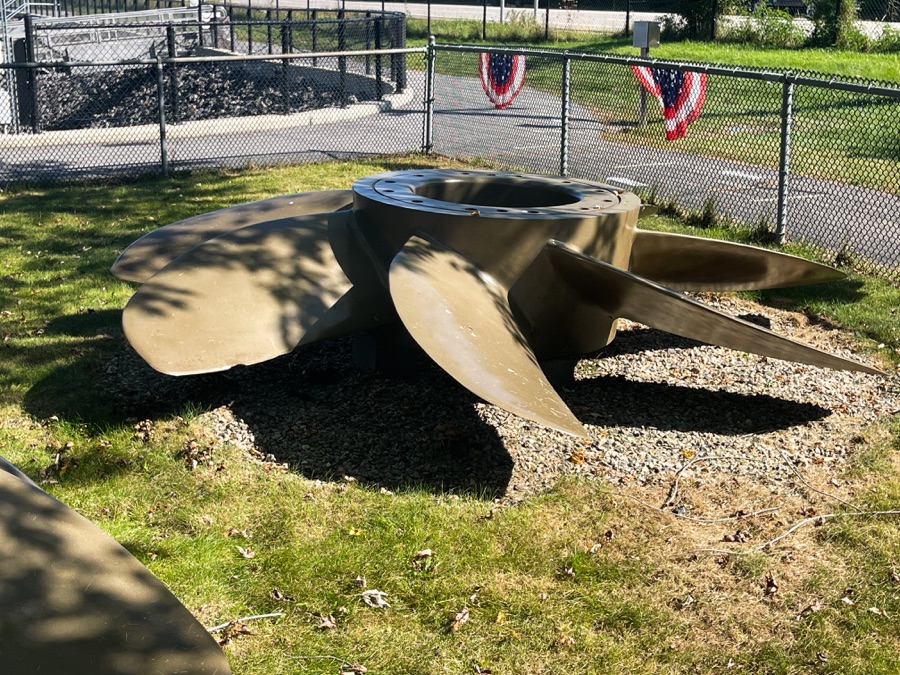
These were designed and redesigned several times.
Did You Know? - Interests in submarines extends to royalty and presidents. The King of England and the King and Queen of Spain are among those who have made submerged cruises in submarines. As a result of a trip in an early United States submarine, President "Teddy" Roosevelt ordered extra compensation for personnel serving in the "Silent Service." President Harry Truman made a 440 foot dive in a captured German submarine. The first President to cruise aboard a nuclear submarine was President Eisenhower who rode the USS SEAWOLF out of Newport, Rhode Island on September 26, 1957.

Looks quite interesting.

We are ready to enter.
Did You Know? - Modern submarines can travel faster submerged than they can on the surface. They can fully submerge in less than a minute.
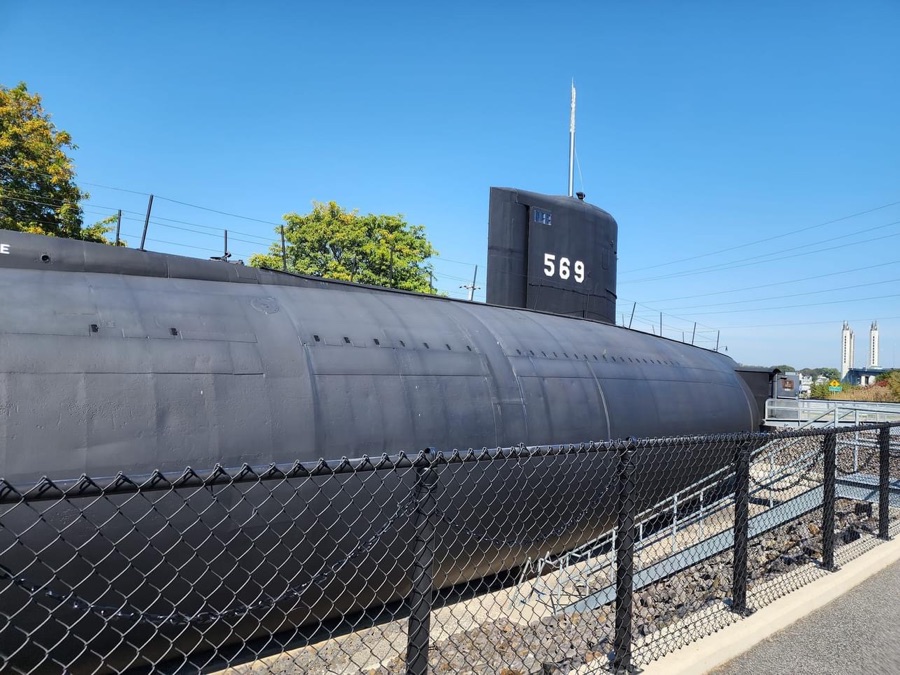
Marks says the screen doors never seem to work!
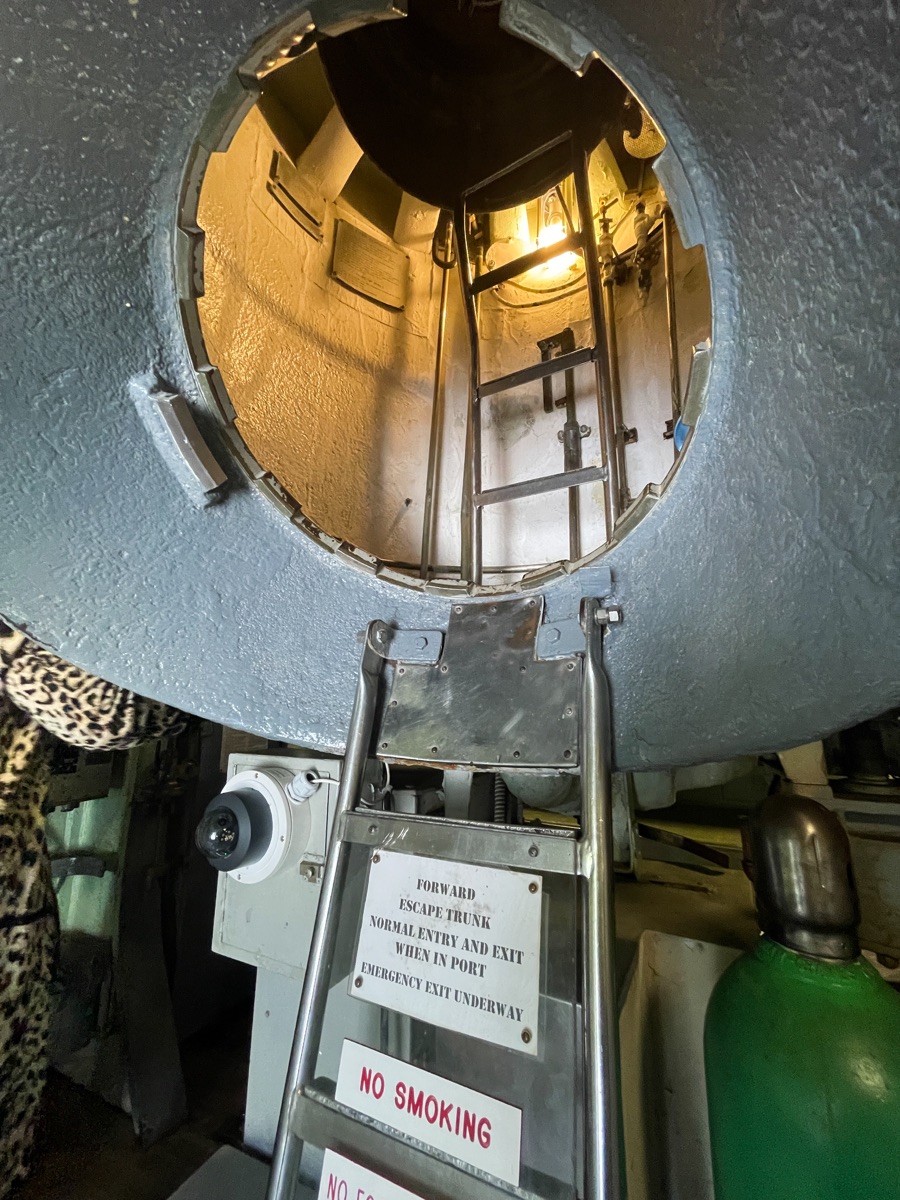
First things first; finding a way out!
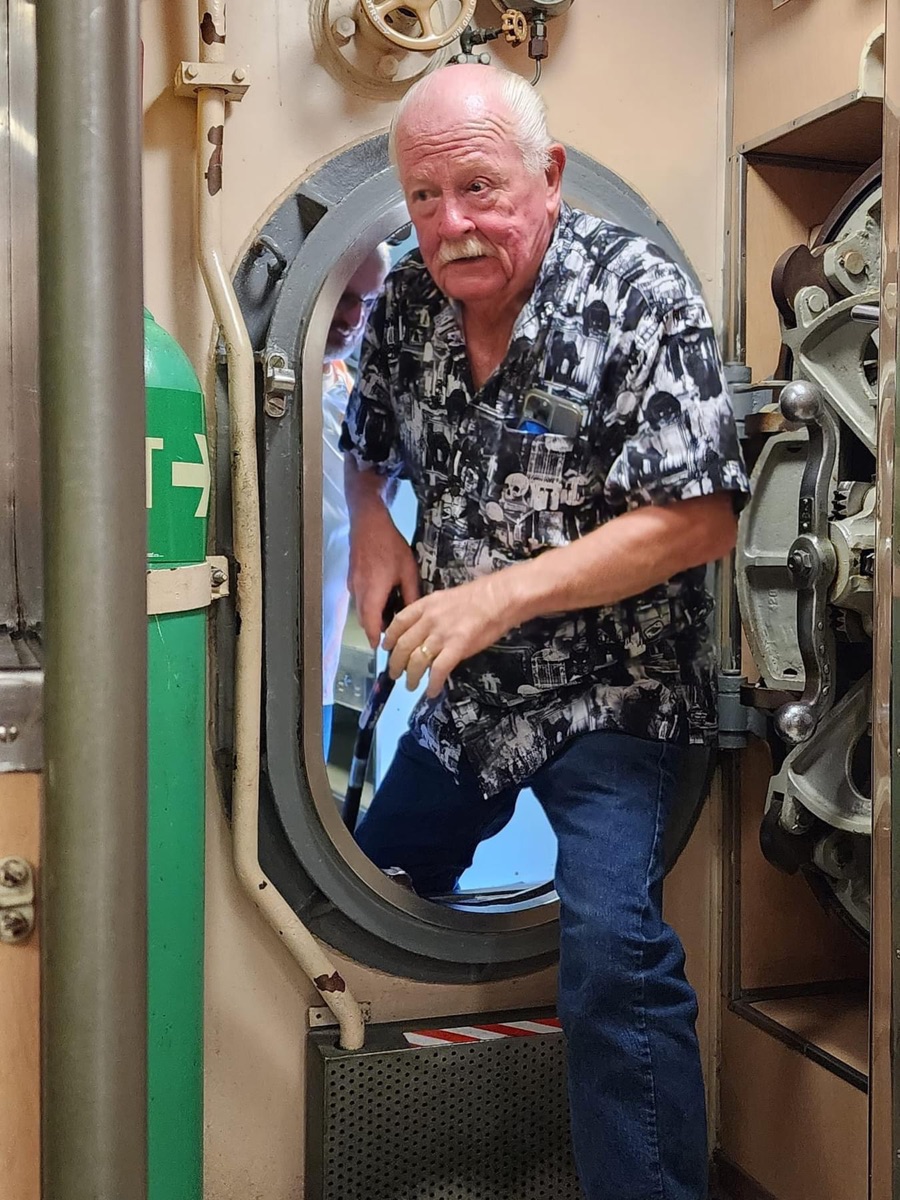
I'm going to feel this in the morning
Did You Know? - Insignia of the Navy's submarine service is a submarine flanked by two dolphins. Dolphins, or porpoises, the traditional attendants to Poseidon, Greek God of the Sea and patron deity of sailors, are symbolic of a calm sea, and are sometimes called the 'sailors' friend. In addition to the Dolphins, those World War II submariners who participated in successful combat patrols may wear the coveted Submarine Combat Insignia.
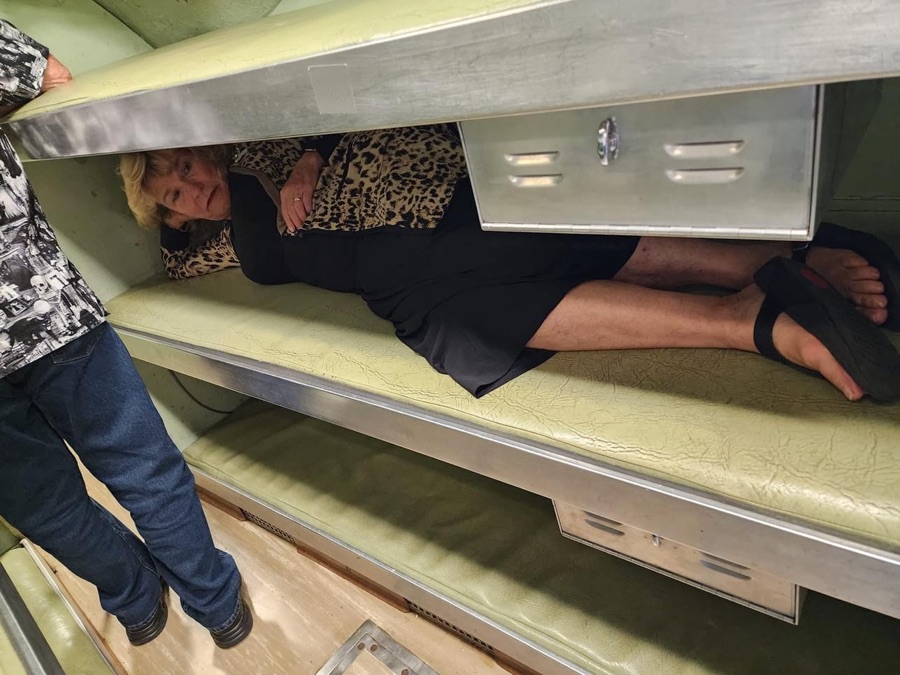
"You must be kidding!"
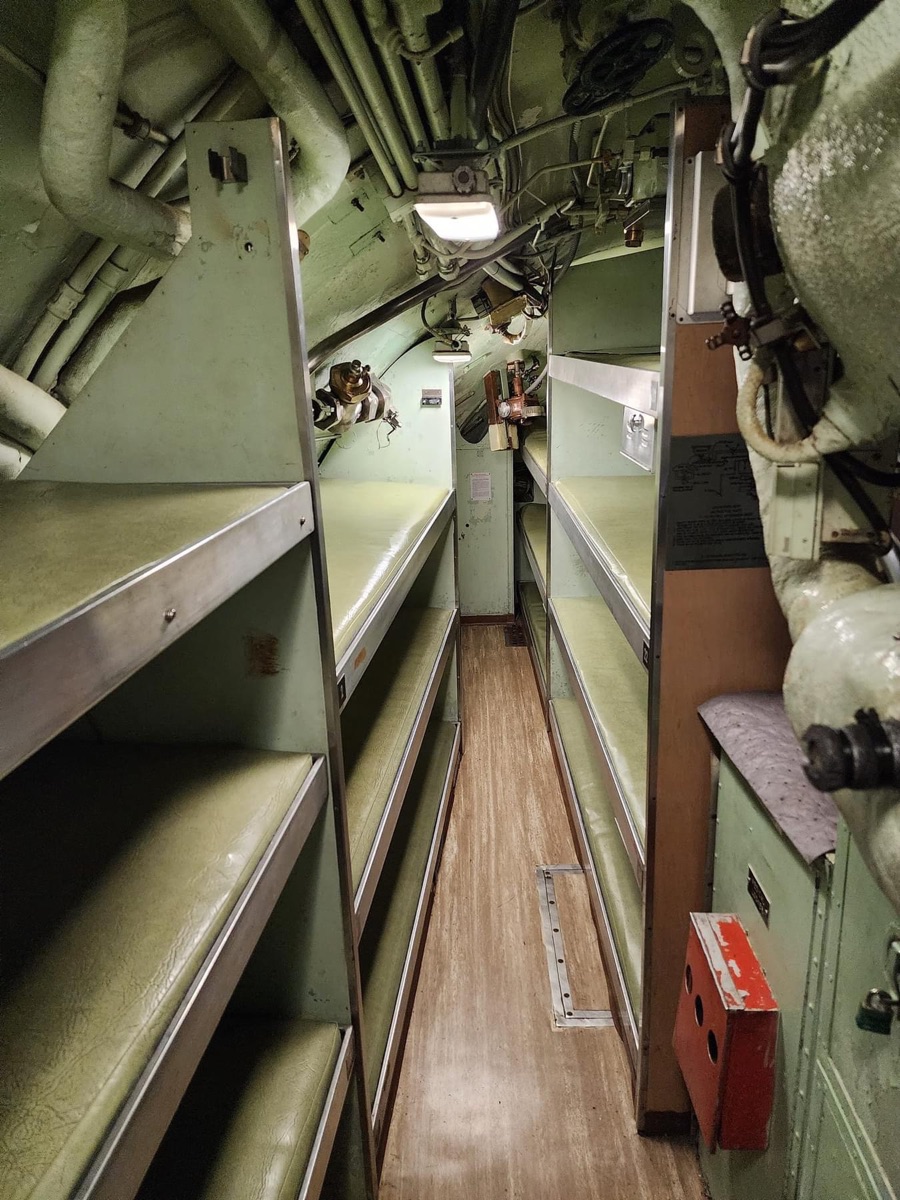
Any place with room, people find to sleep!

A little close quarters, you think?
Did You Know? - Per cubic inch, there is more science packed into a submarine than into any other warship. Submariners say 'There is room for everything aboard a submarine except a mistake.'
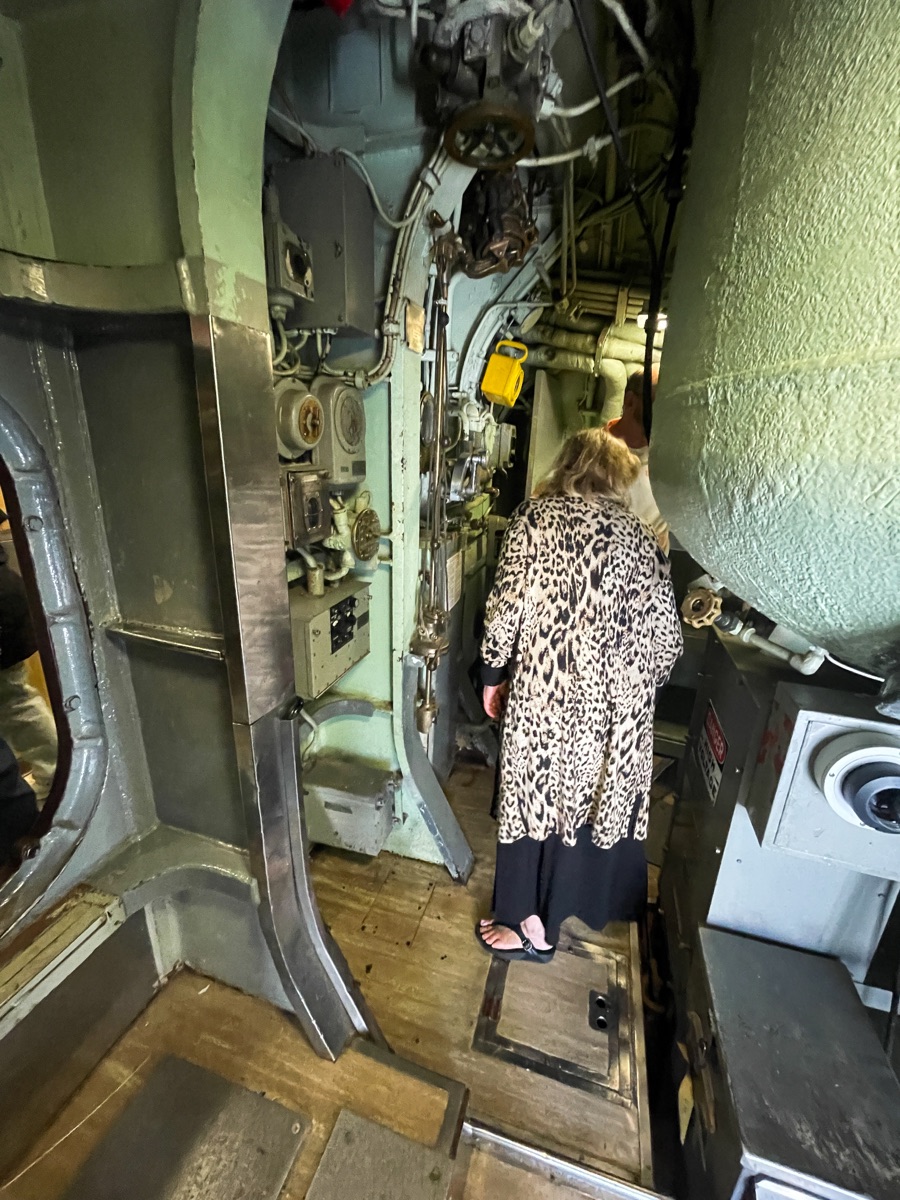
Mary poked around in every corner.
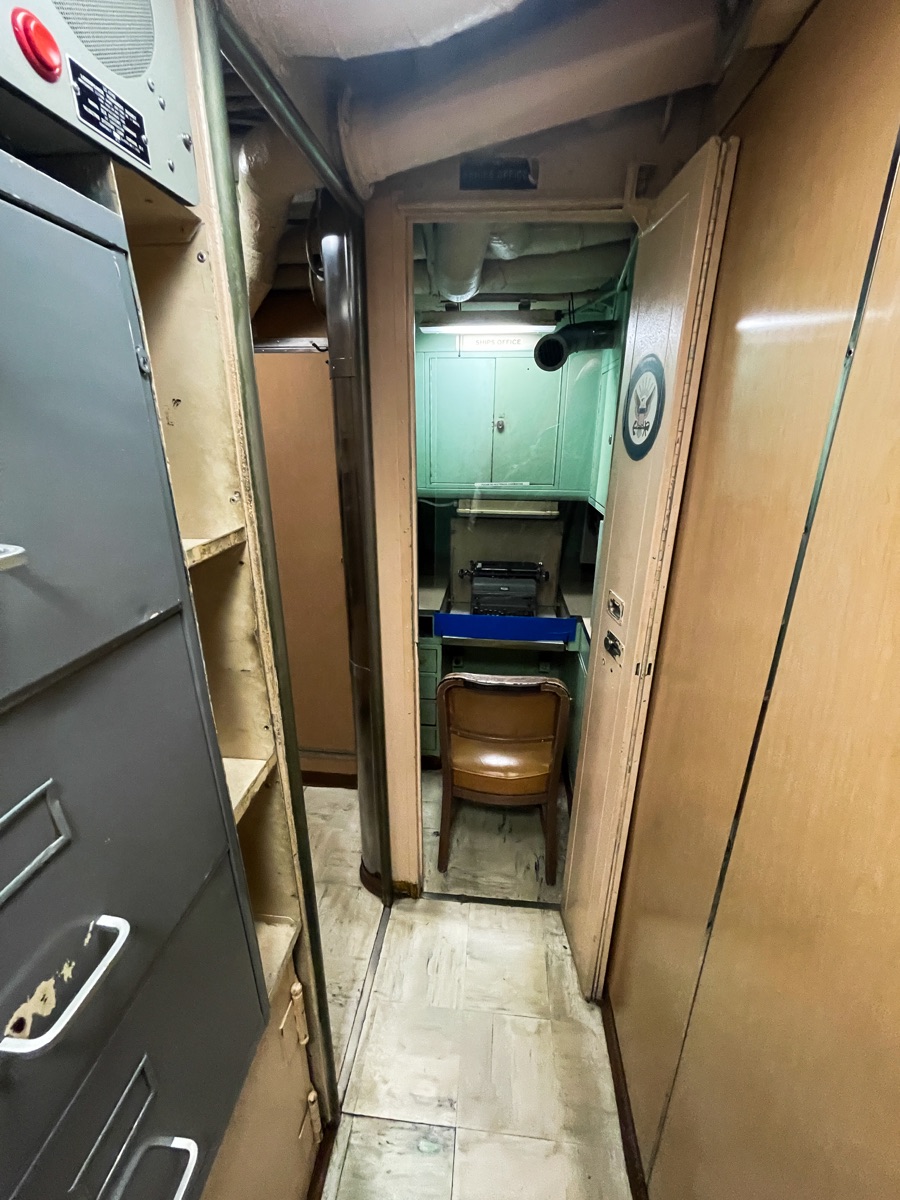
The ship's clerks office was a bit crowded.
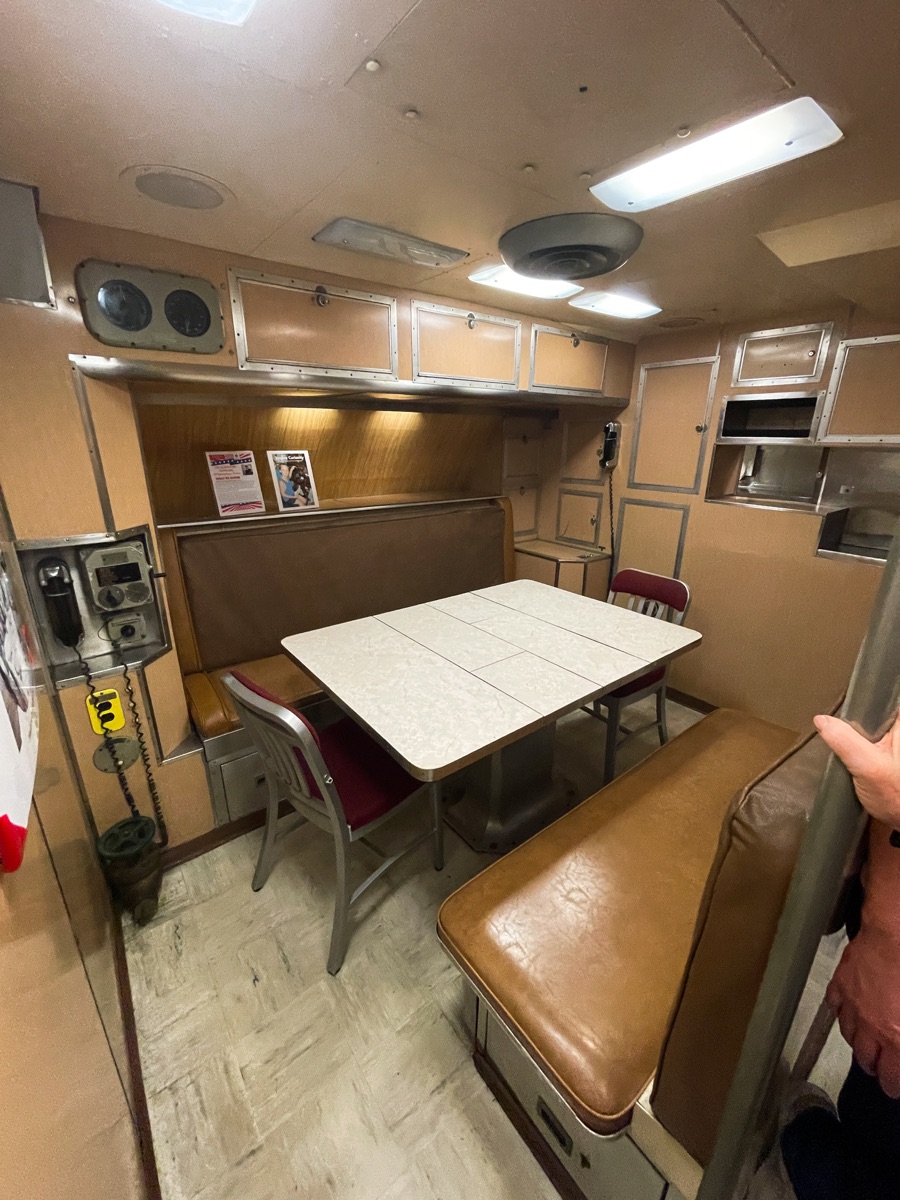
The officers mess.
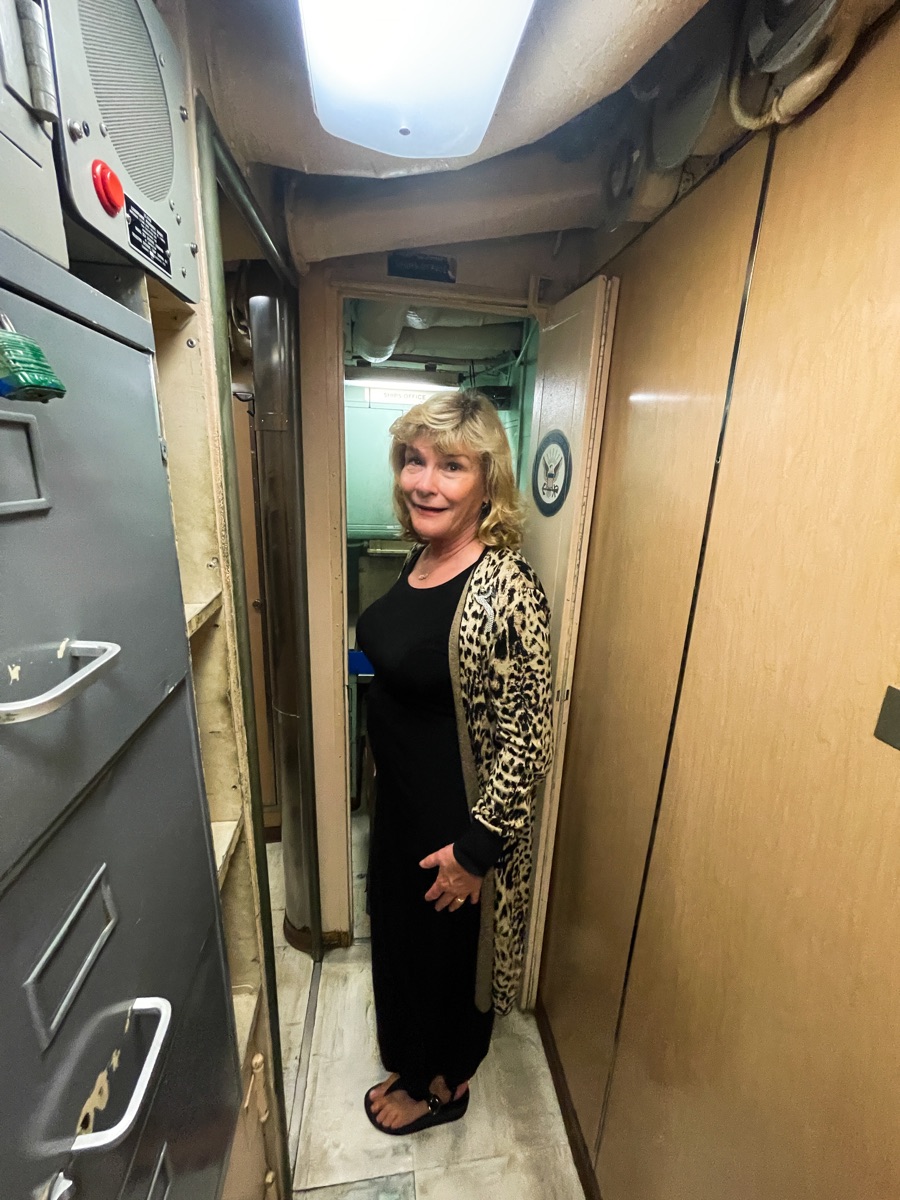
This is really small!
Did You Know? - United States Submarines destroyed a total of 1314 Japanese ships during World War II, including one battleship, eight aircraft carriers, fifteen cruisers, forty-two destroyers, and twenty-three submarines. Against this score, fifty-two U.S. Submarines were lost.
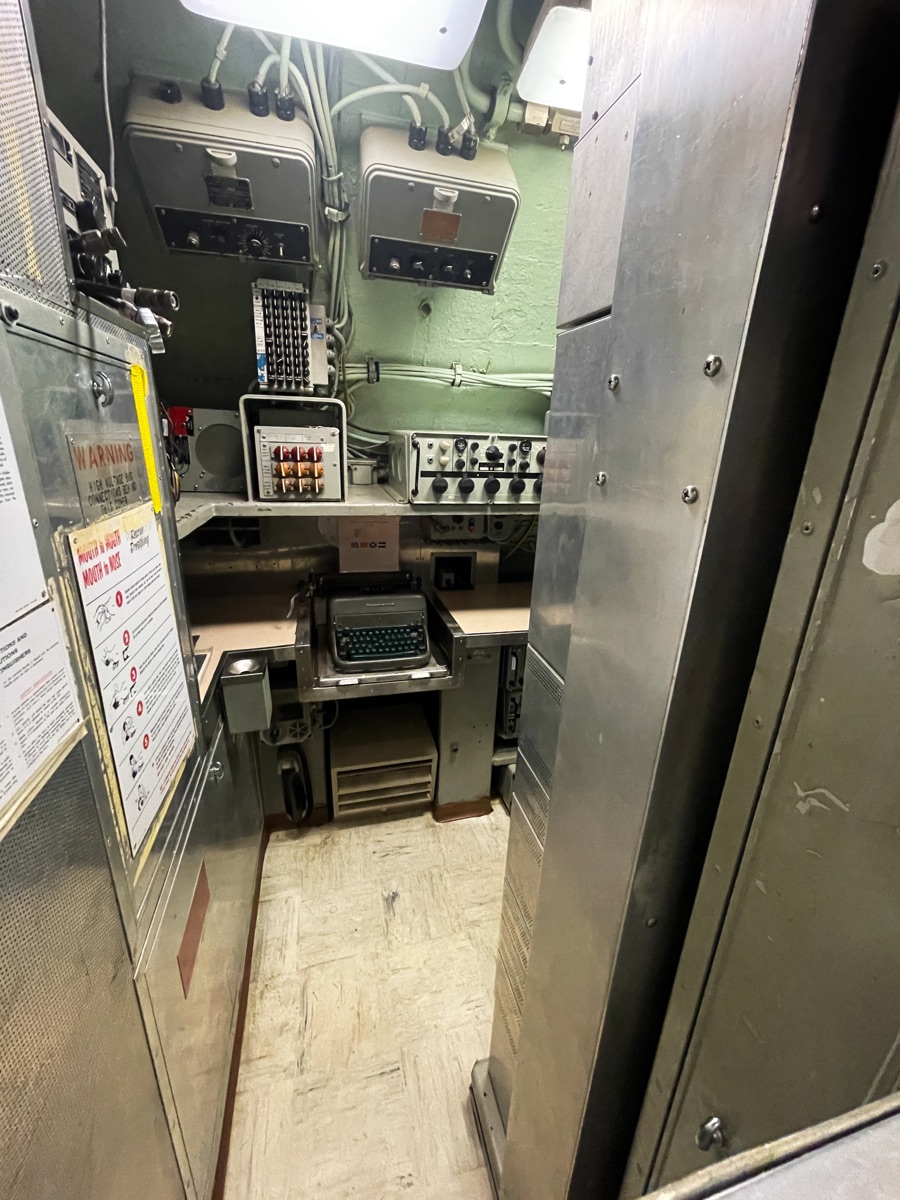
The Radio Room or communications center.
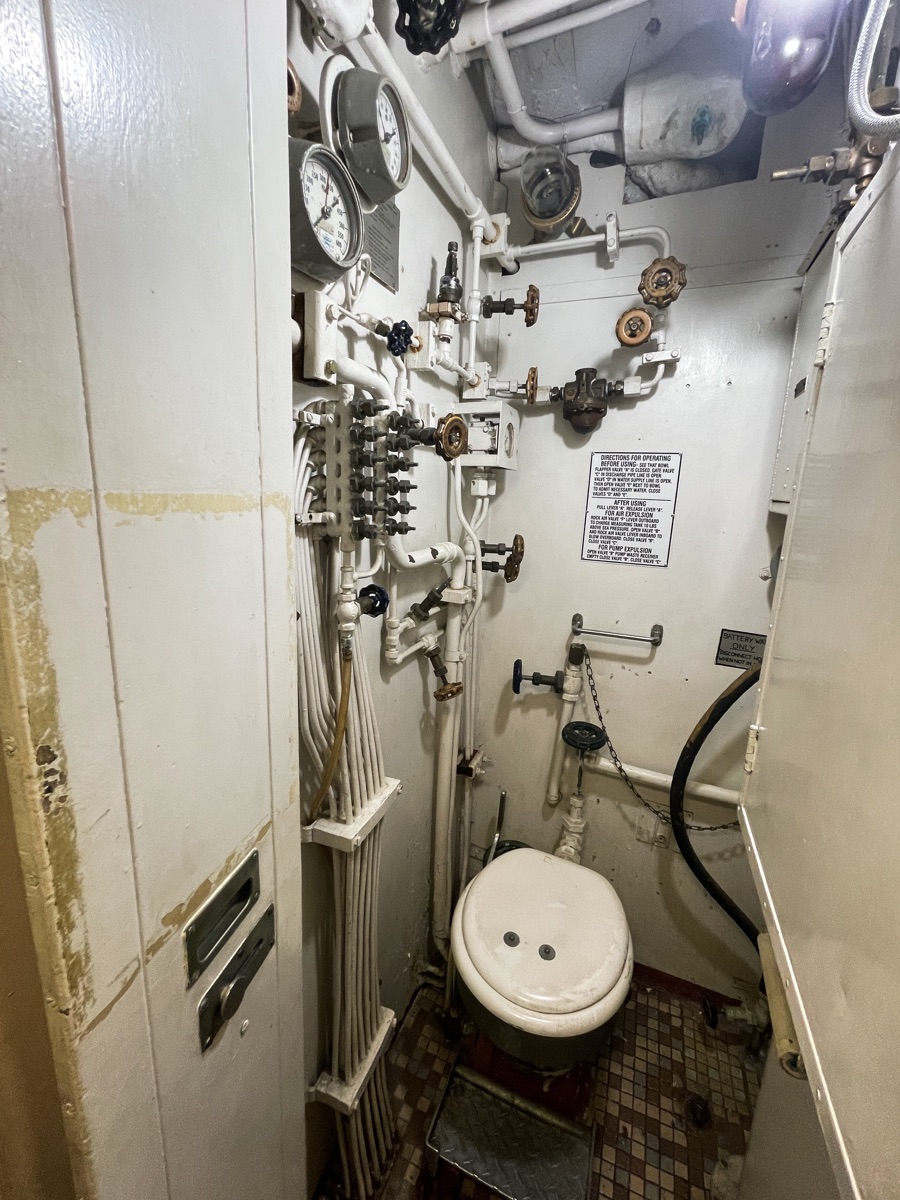
If you were in a hurry, this could be a problem!
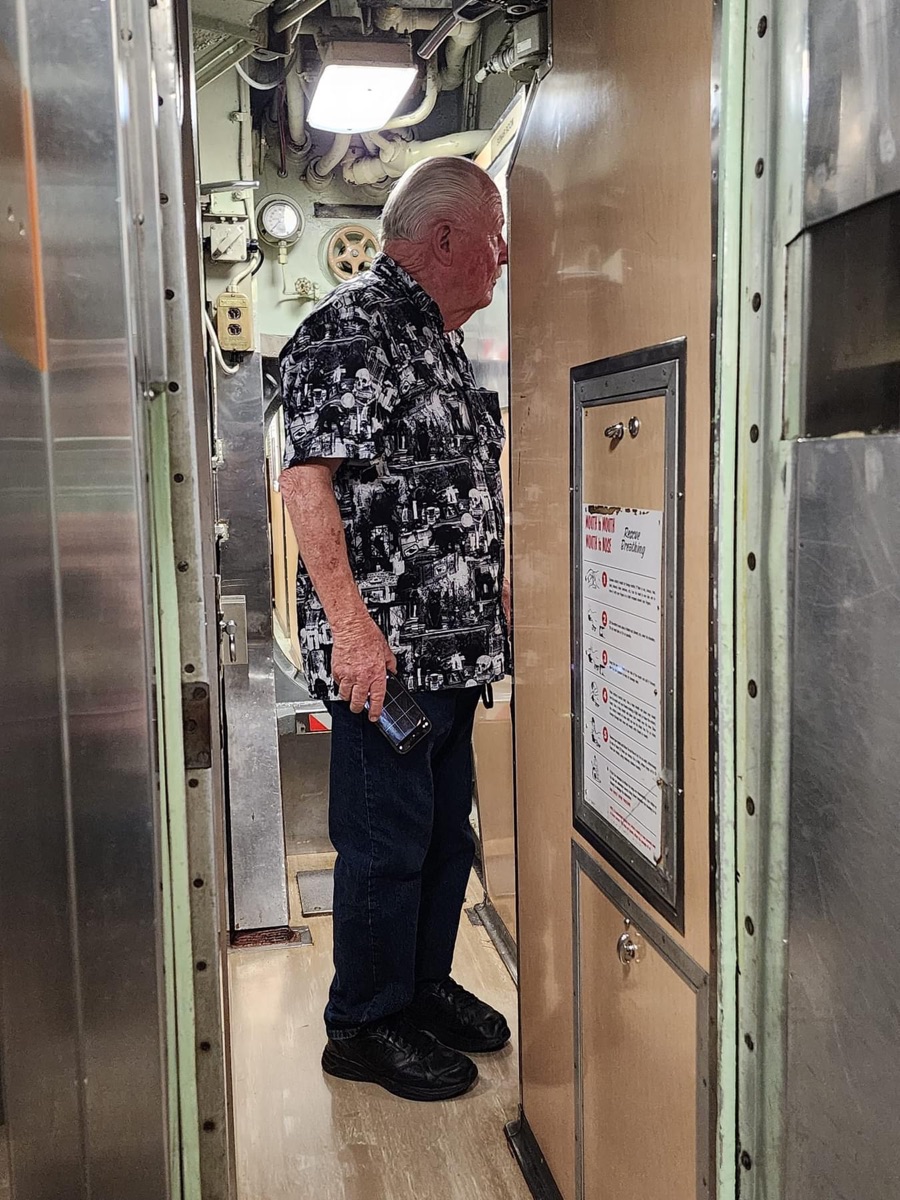
Yep, I was right; the shower is nearby!
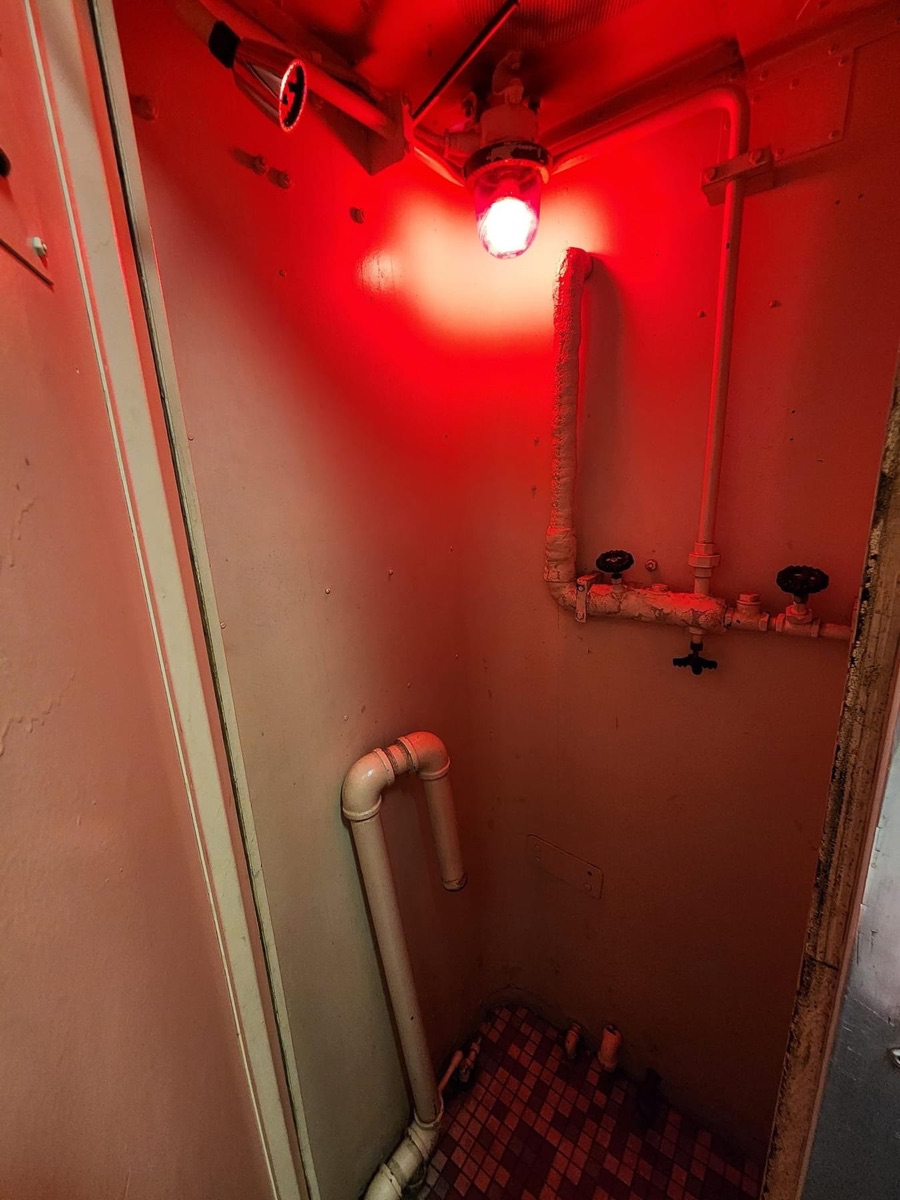
A sauna?
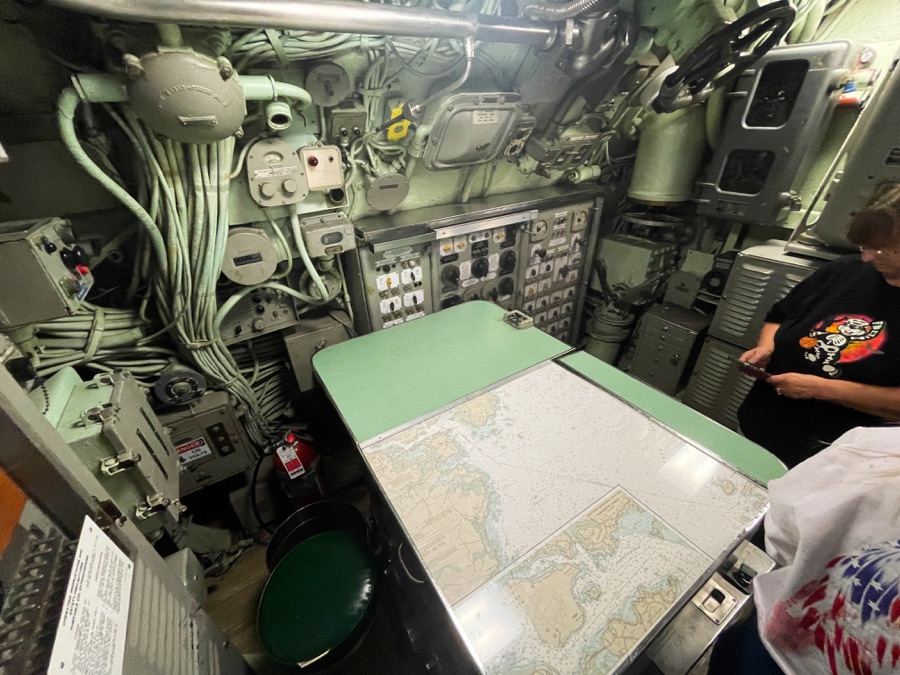
The chart room was without GPS.
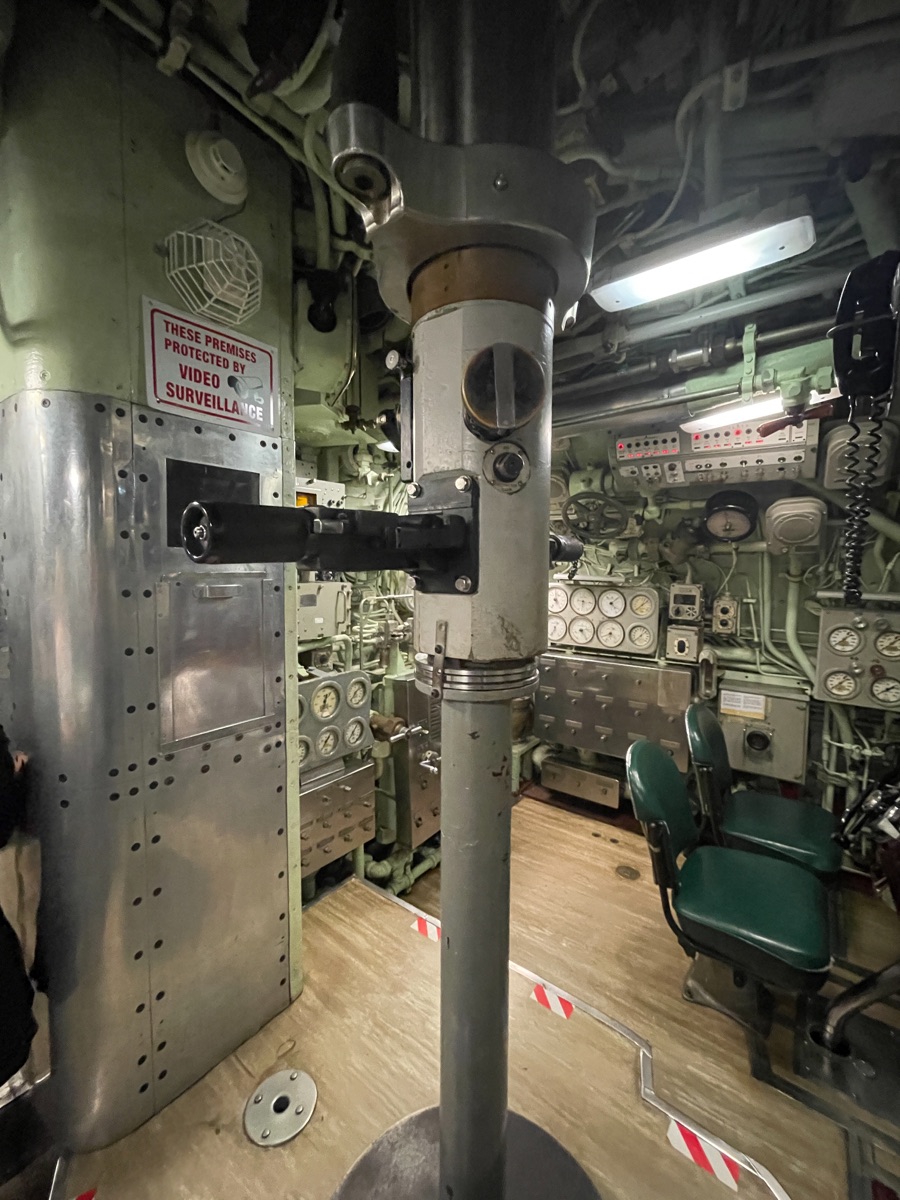
Take a gander.
Did You Know? - USS TRITON, the only American made twin reactor ship ever built, on May 10, 1960, completed the first totally submerged circumnavigation of the world when she followed the route of Ferdinand Magellan for 36,000 miles during 84 days beneath the surface.
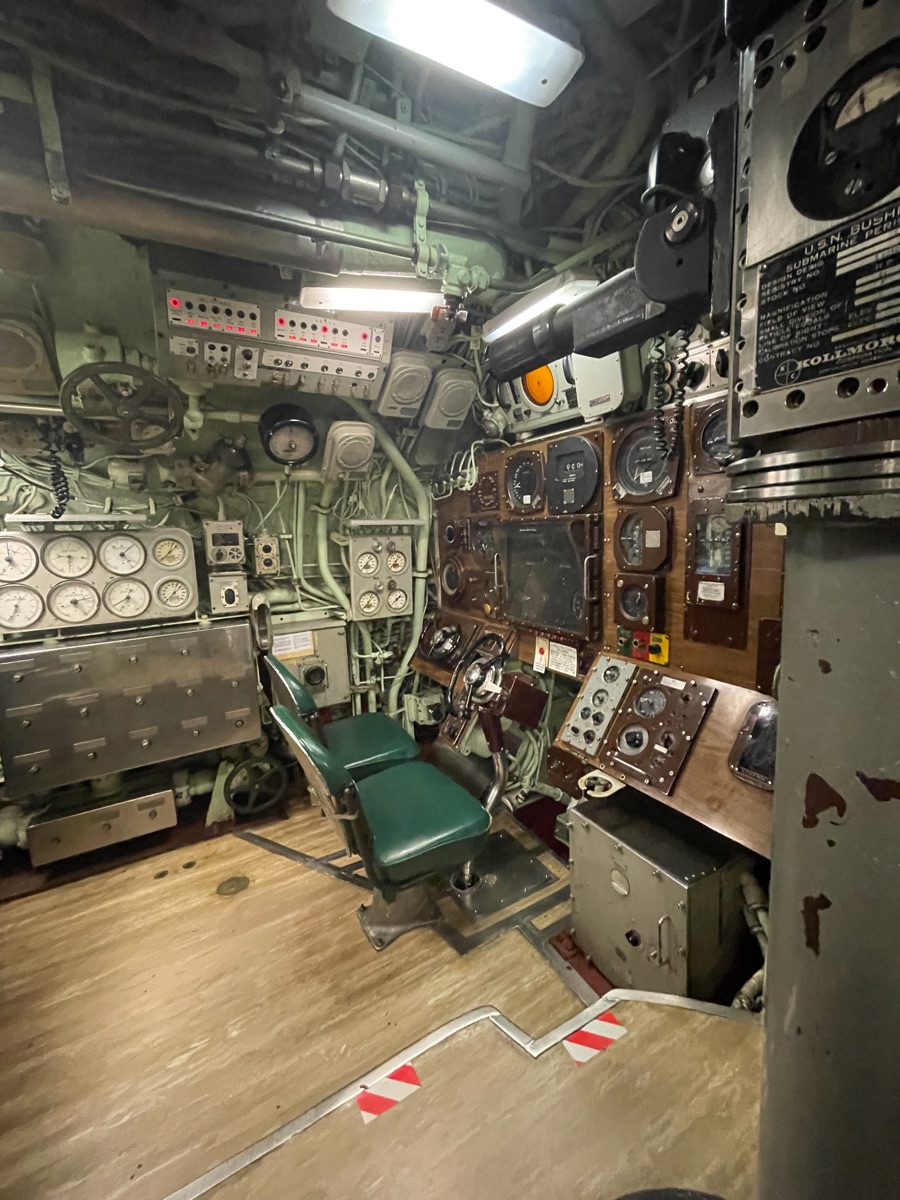
This is where they steer the boat.
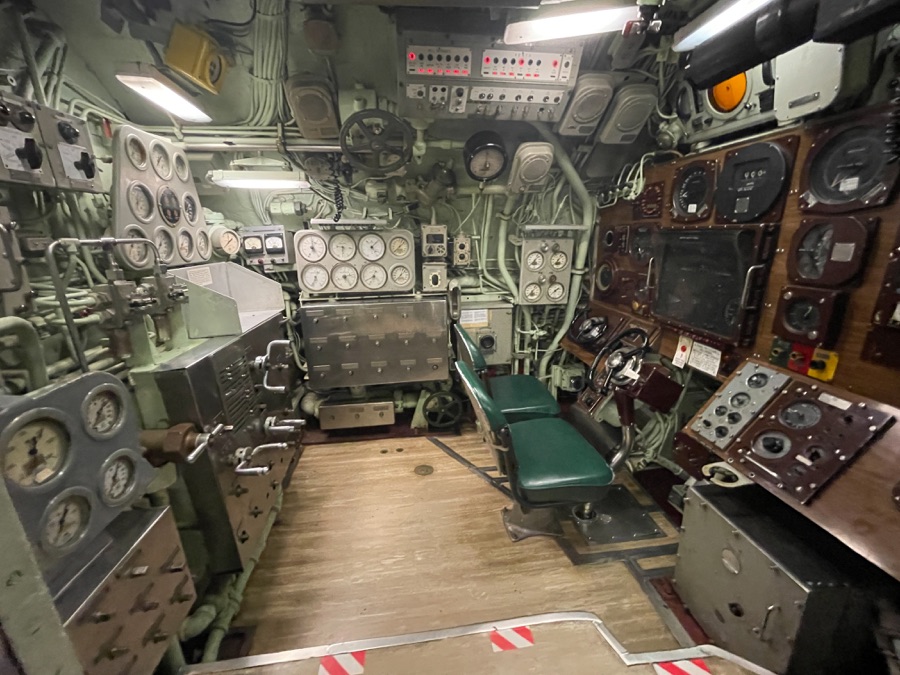
Meters and guages everywhere!
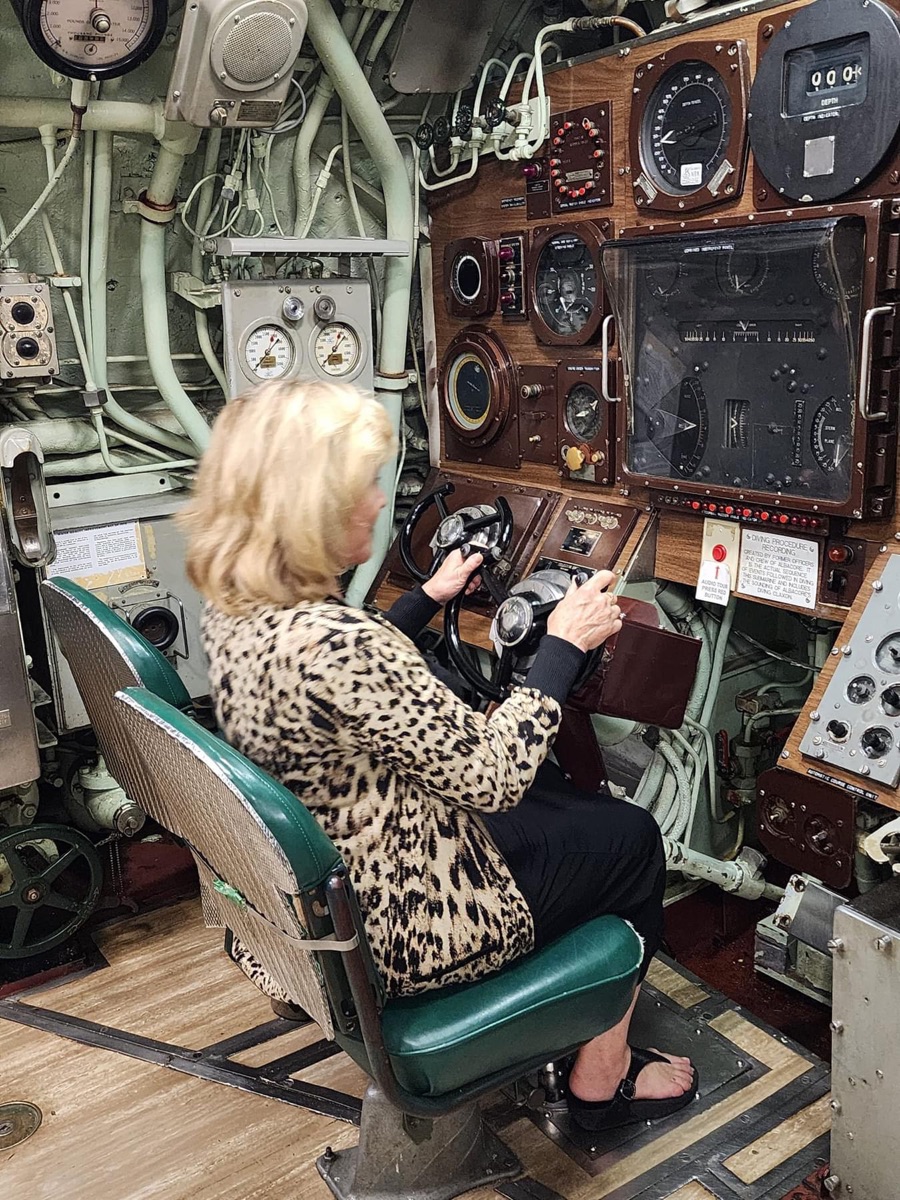
Look out! Woman driver!!
"Where is the horn?"
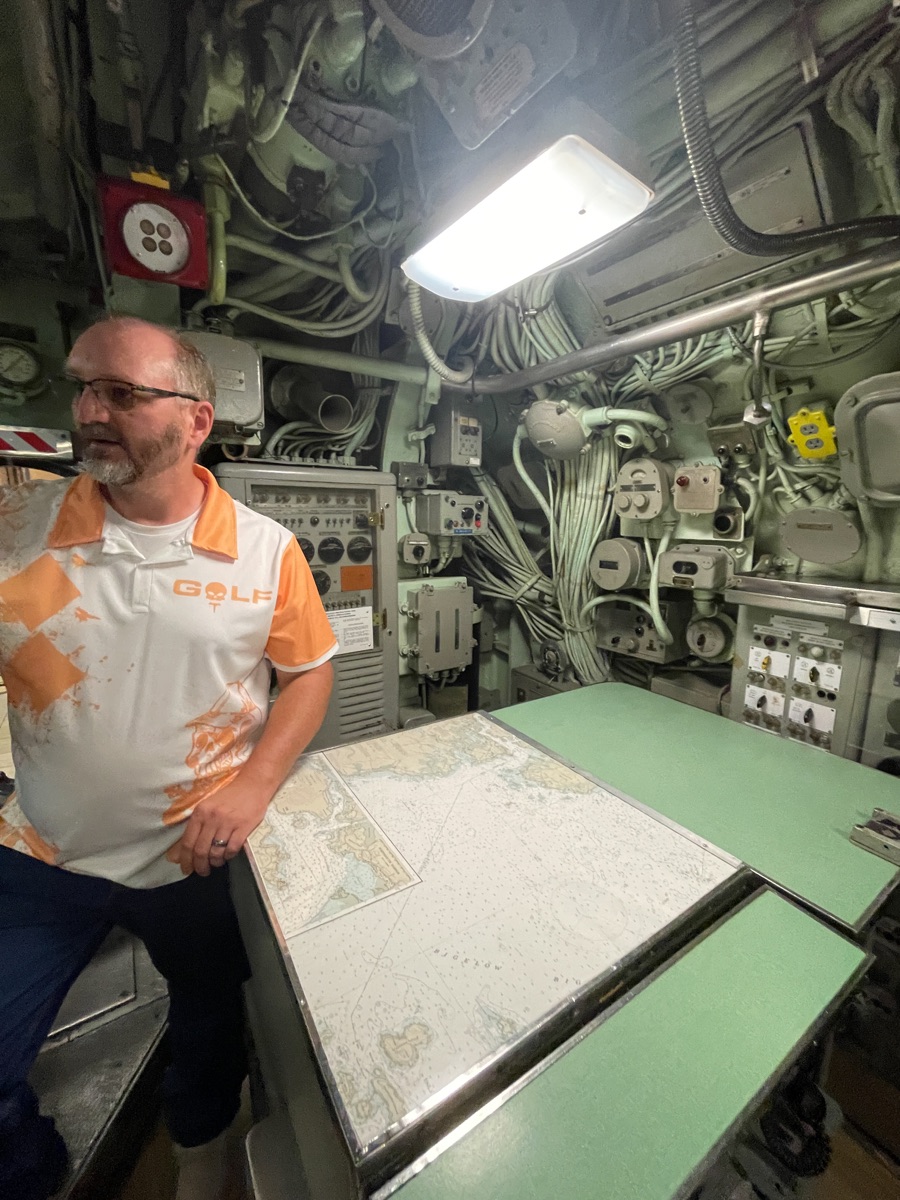
Mark is going to plot a course!
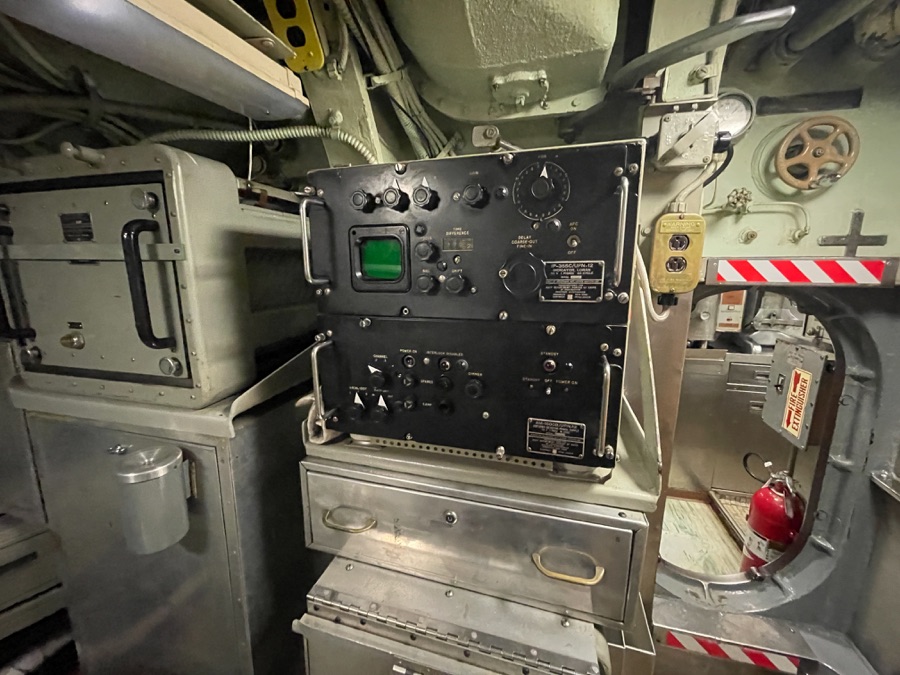
The radios were state of the art for their time.
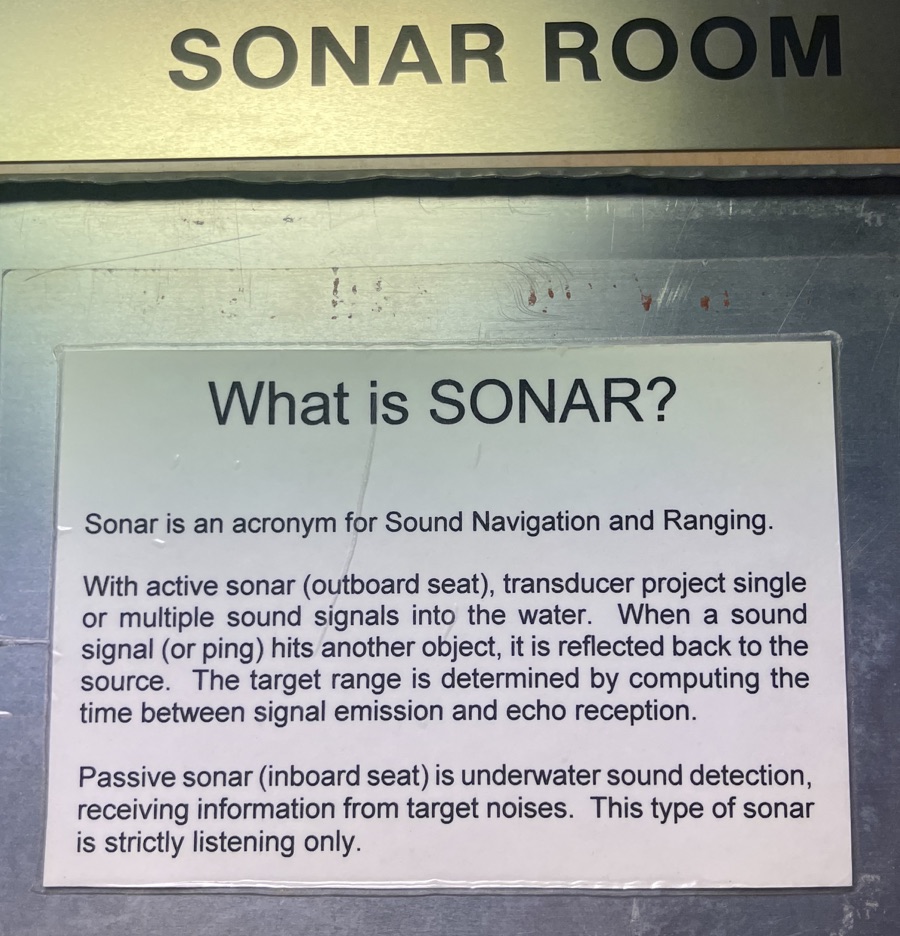
SONAR Room
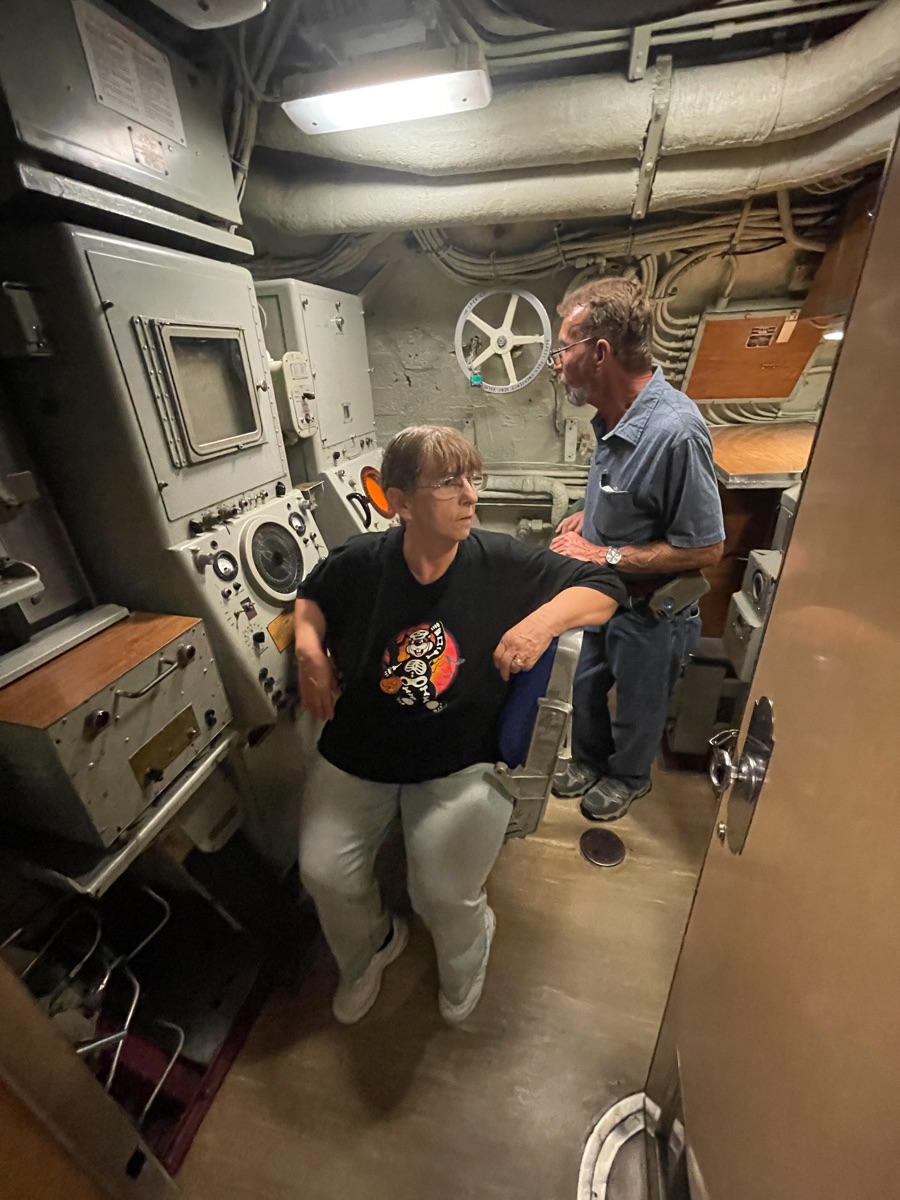
Cuba and Rick take seats in the SONAR center!
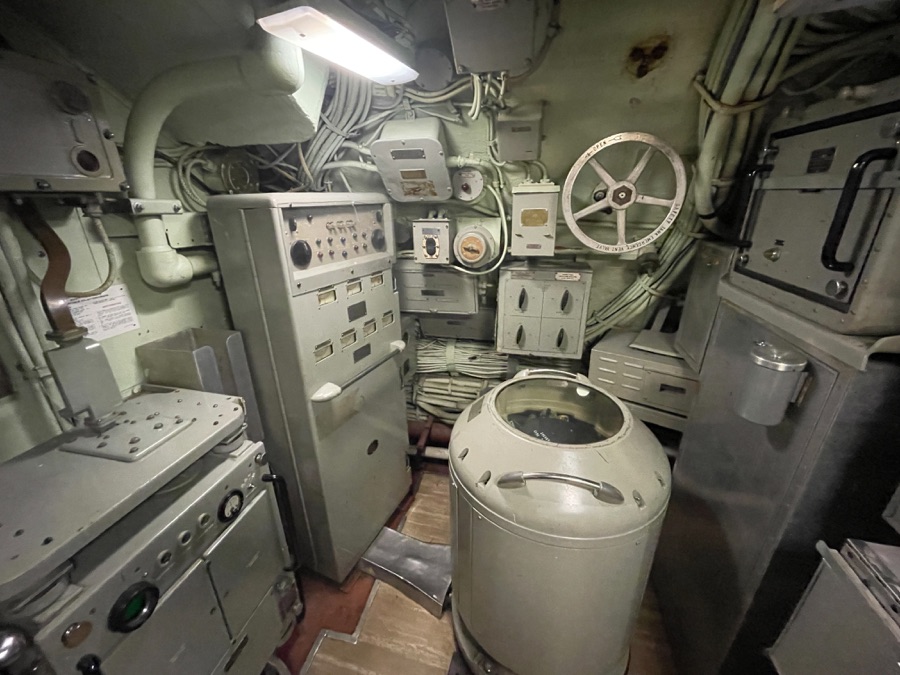
The gyro-compass keeps the ships position known when underwater!
Did You Know? - A gyrocompass is a type of non-magnetic compass which is based on a fast-spinning disc and the rotation of the Earth (or another planetary body if used elsewhere in the universe) to find geographical direction automatically. A gyrocompass makes use of one of the seven fundamental ways to determine the heading of a vehicle. A gyroscope is an essential component of a gyrocompass, but they are different devices; a gyrocompass is built to use the effect of gyroscopic precession, which is a distinctive aspect of the general gyroscopic effect.
Gyrocompasses are widely used for navigation on ships, because they have two significant advantages over magnetic compasses:
(1) they find true north as determined by the axis of the Earth's rotation, which is different from, and navigationally more useful than, magnetic north, and
(2) they are unaffected by ferromagnetic materials, such as in a ship's steel hull, which distort the magnetic field.
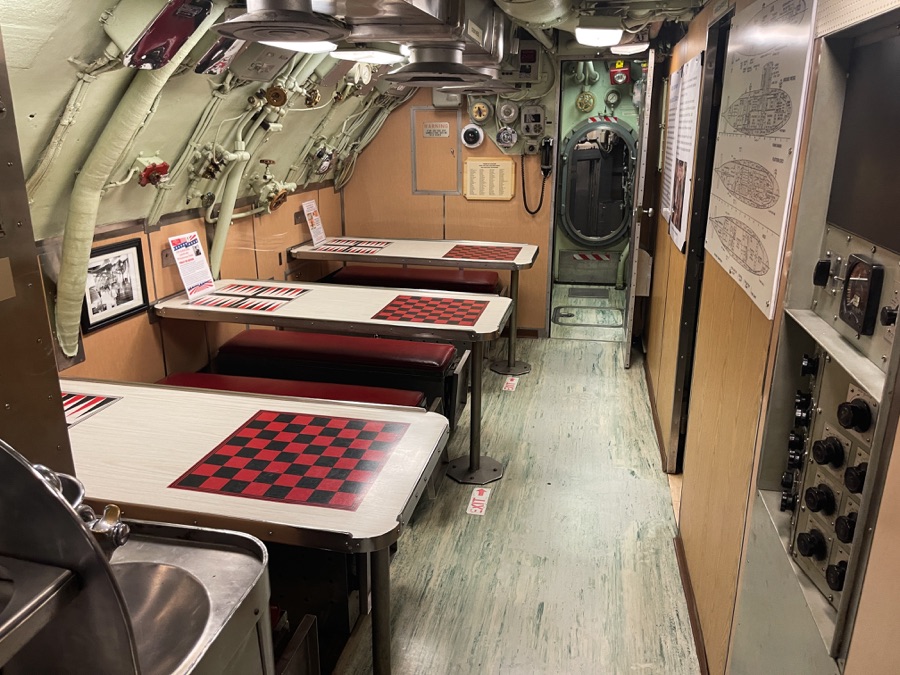
The ward room and mess seated eighteen at a time!
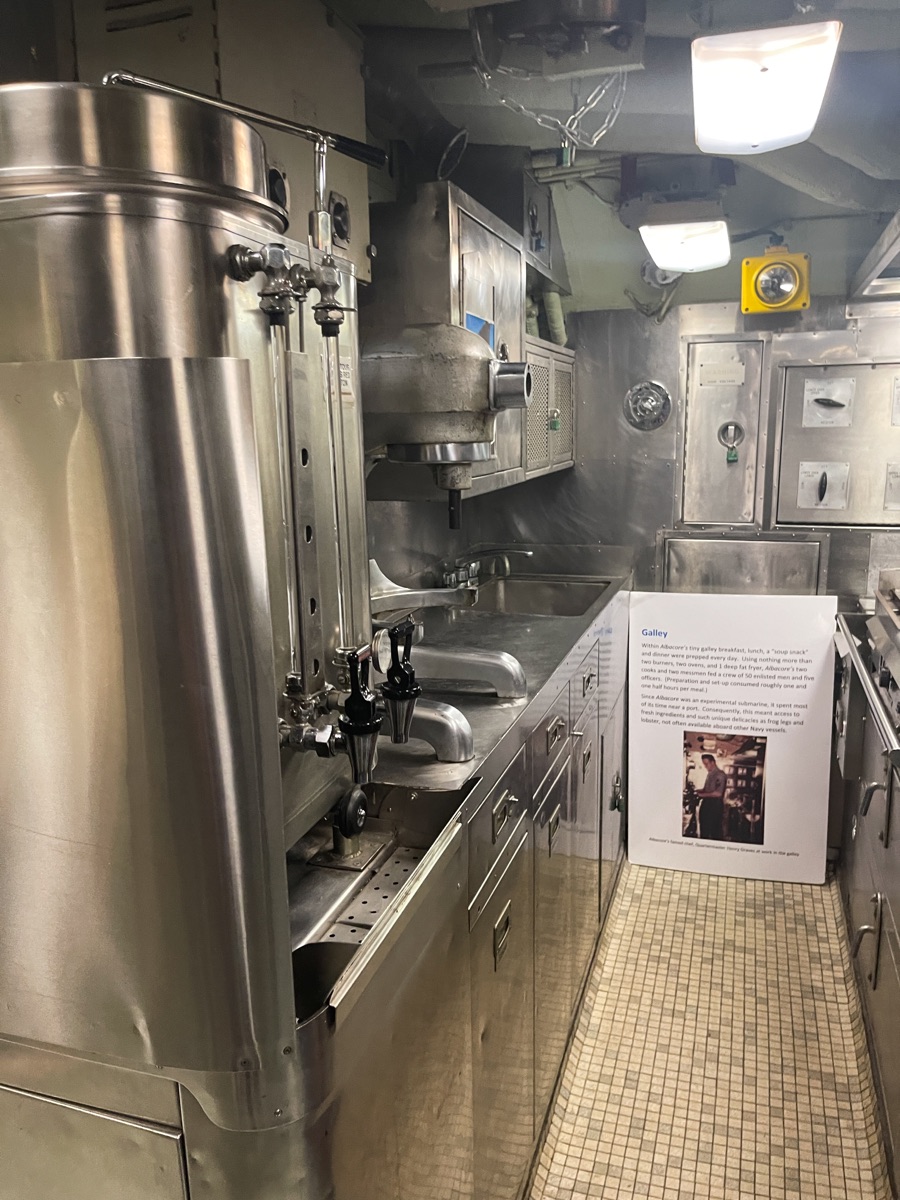
How could they feed 90 men three times a day from here?
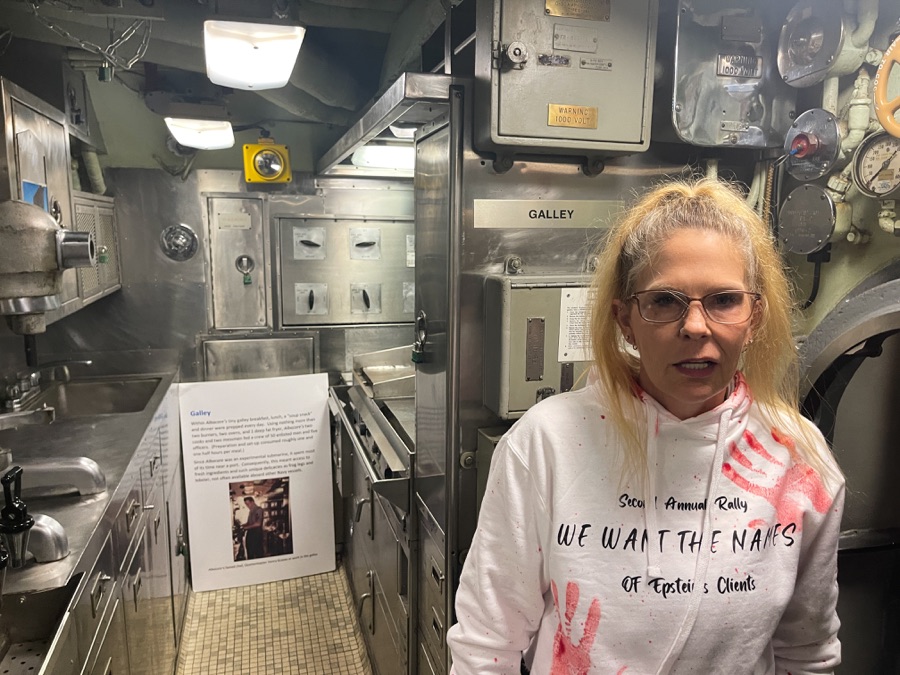
"No Mark, we are NOT redesigning our kitchen!!"
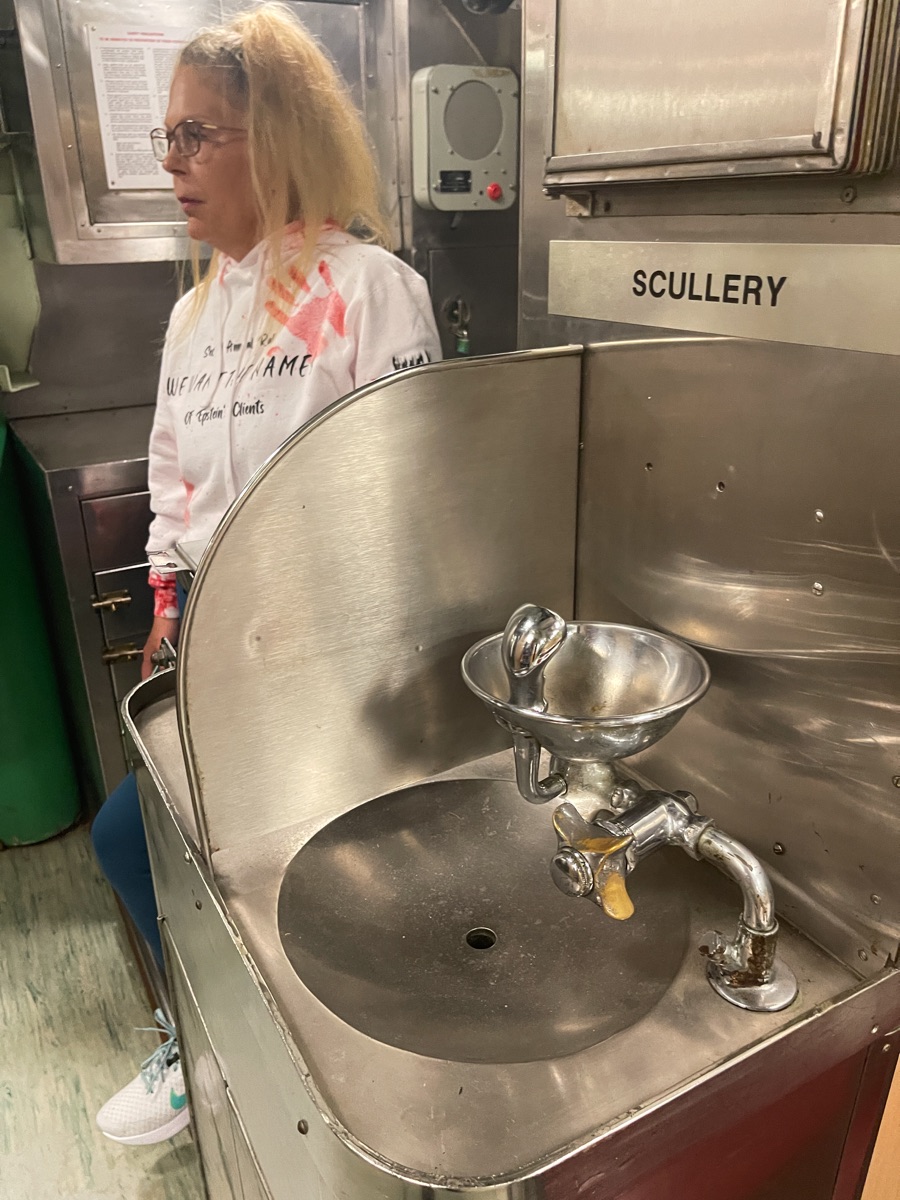
Stainless steel everywhere!
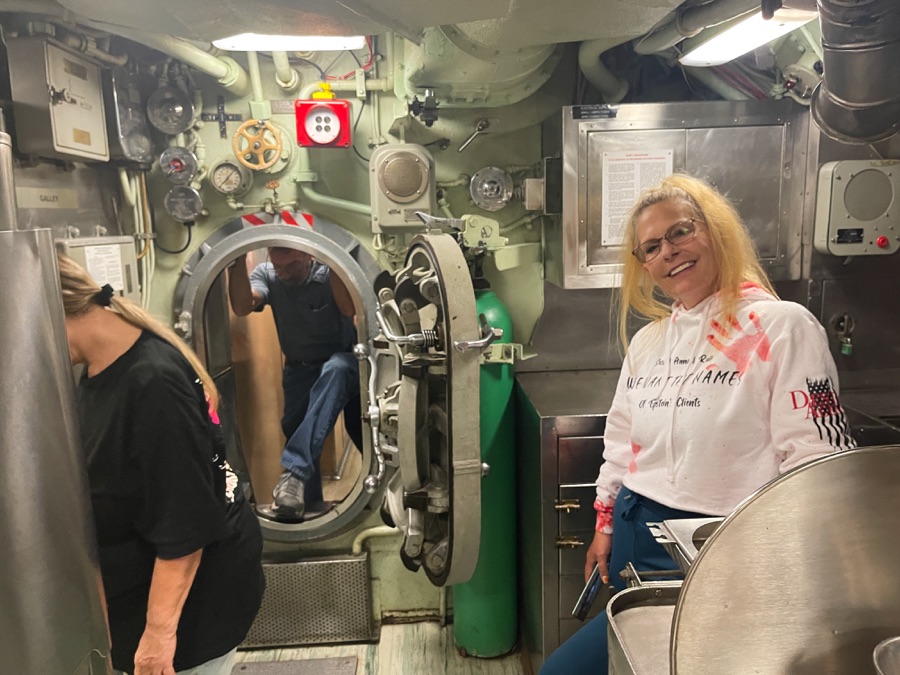
"Duck or hear the CLUNK!"
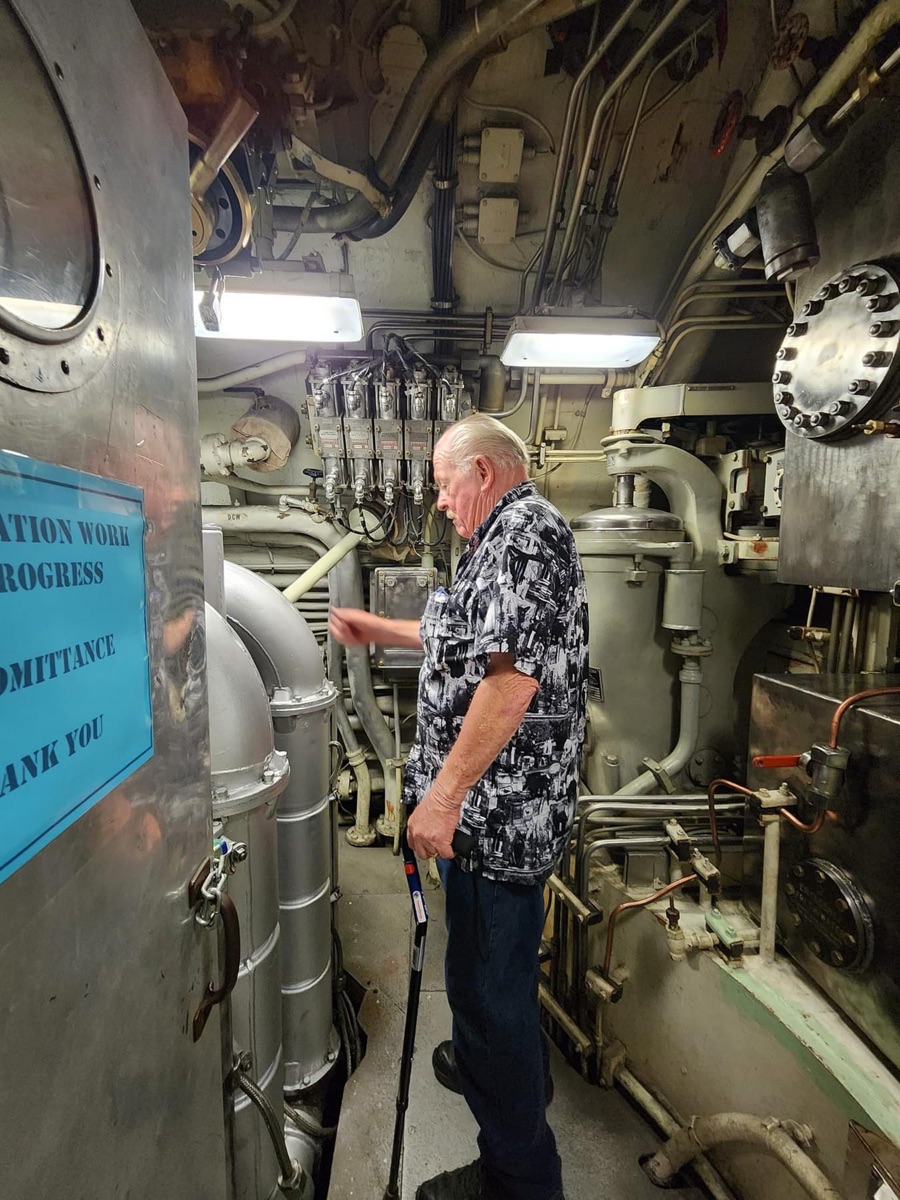
What happens if I pull this little lever??

Mary has her camera ready!
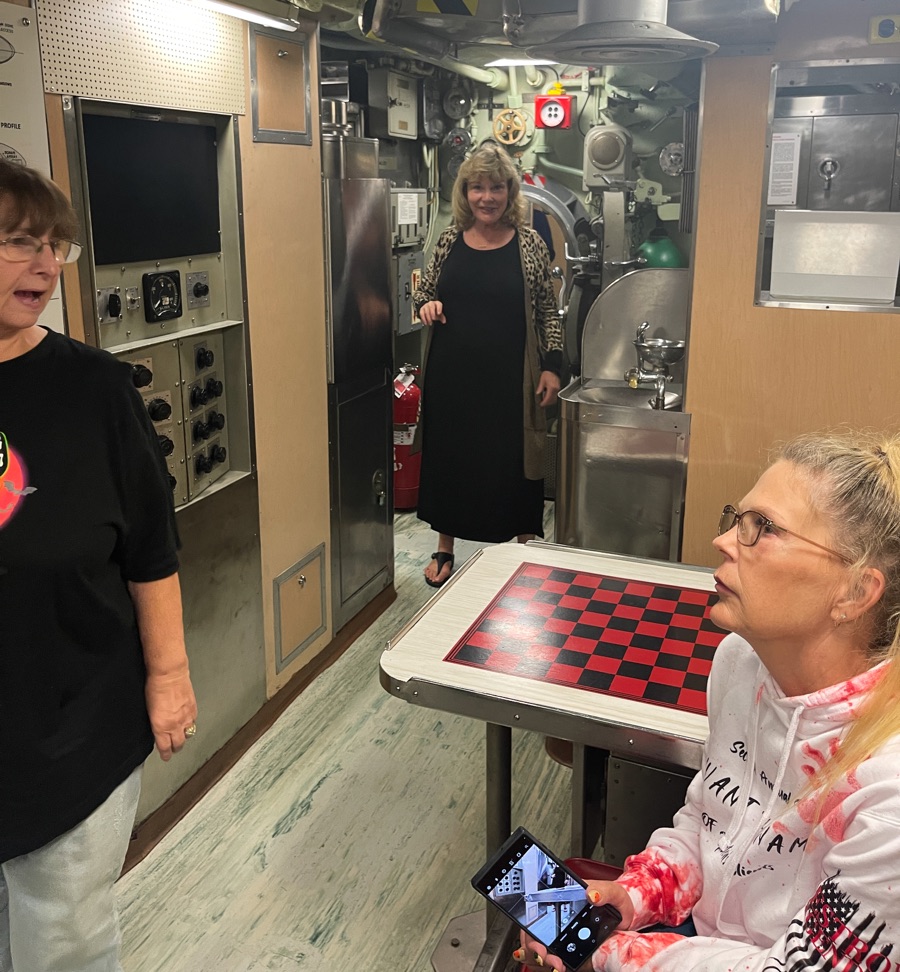
Guess what I found!
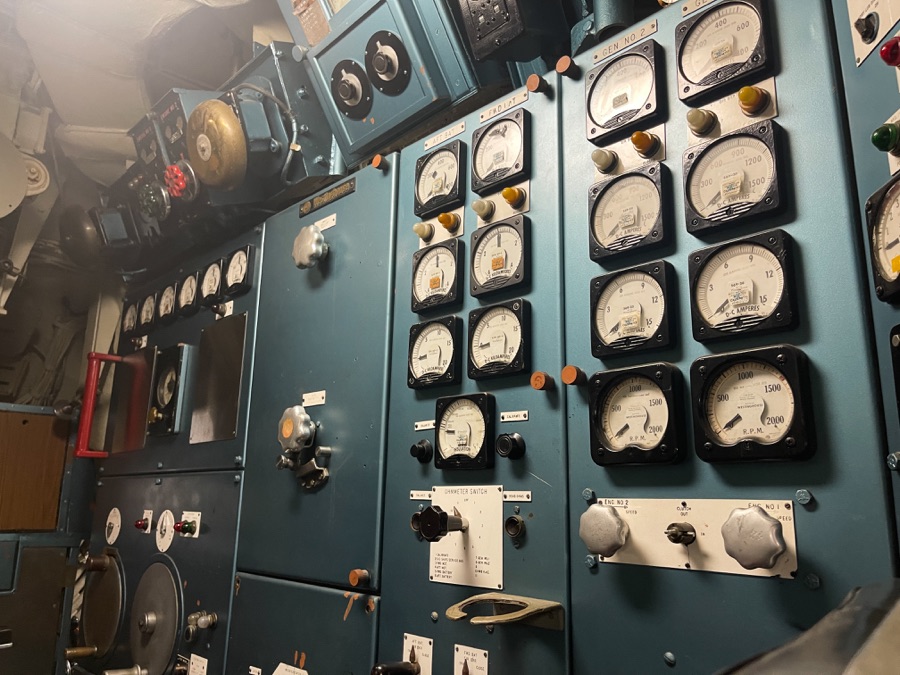
The engine compartment was loaded with meters!
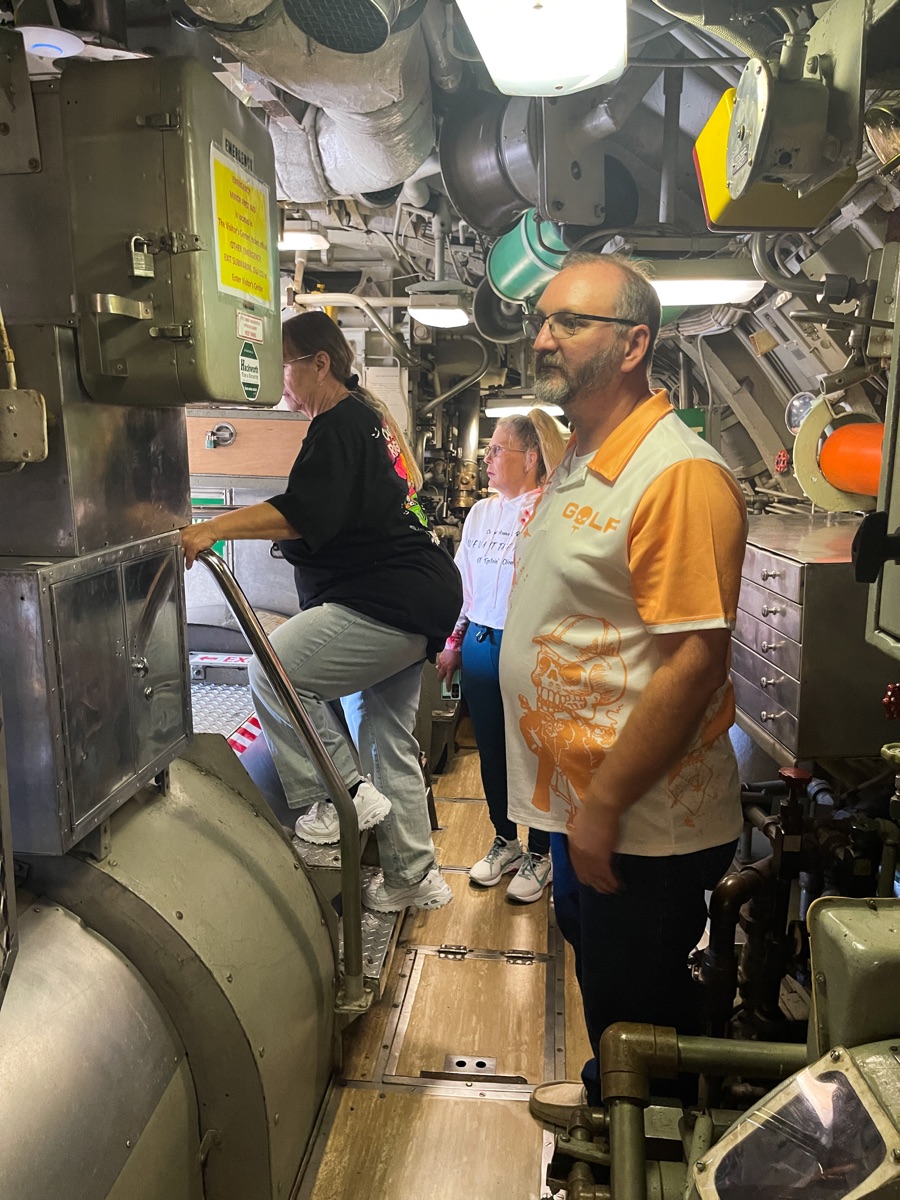
Mark said the new nuclear subs are a bit different!
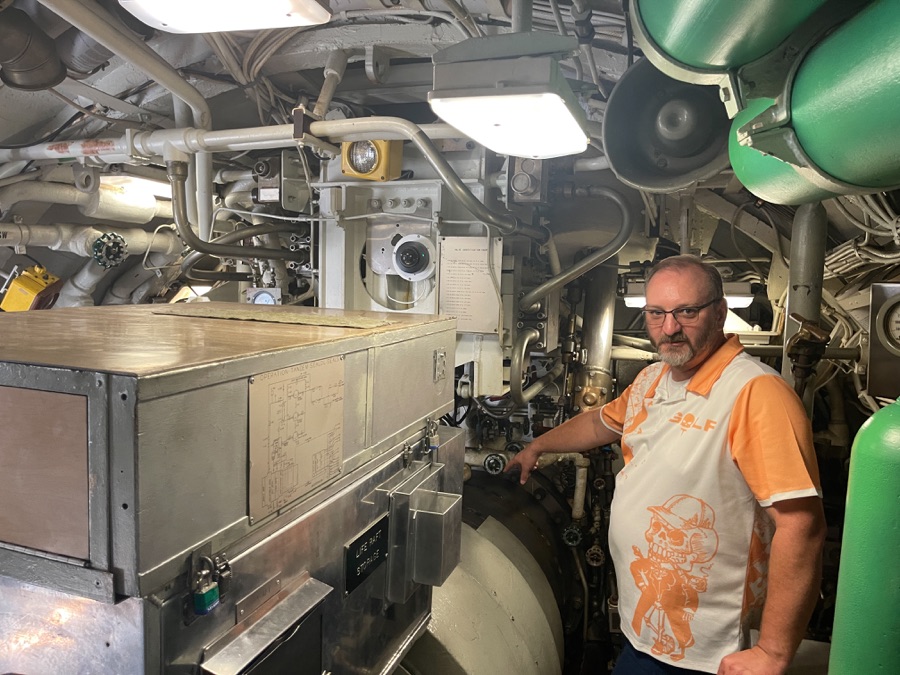
Atomic energy was a significant change to the subs!
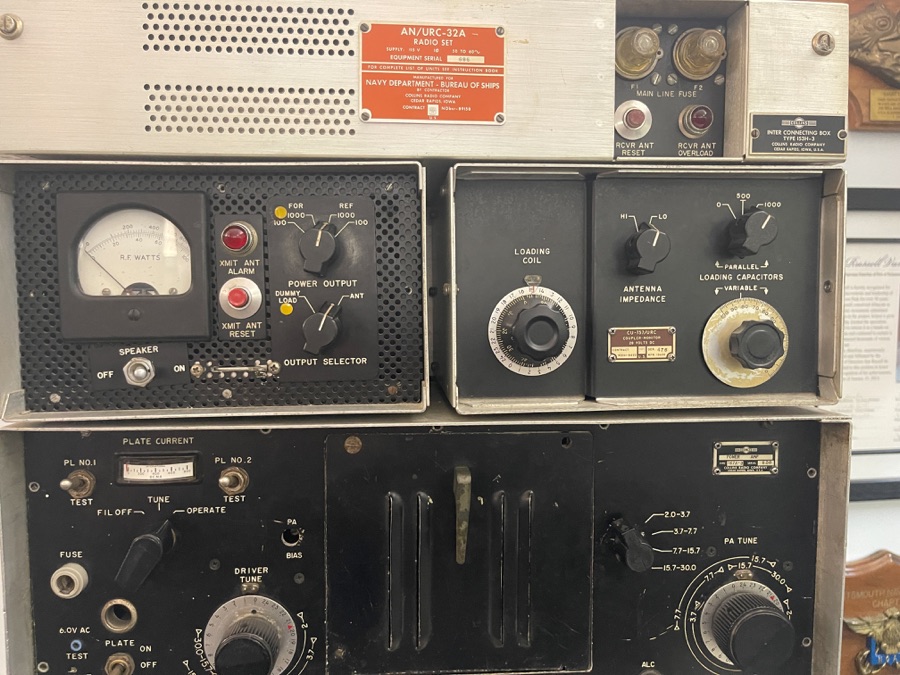
Not powerful but fairly flexible.
Did You Know? - Radio transceiver AN/URC-32 (fig. 3-3) is a manually operated radio communication equipment for operation in the 2- to 30-mc (high frequency) range. With a power output of 500 watts, this transceiver is capable of transmitting signals over long distances. It is designed for single-sideband transmission and reception on upper sideband, lower sideband, or the two independent sidebands simultaneously, with separate a-f and i-f channels for each sideband. In addition to SSB operation, provisions are included for compatible a-m (carrier plus upper sideband), CW, or frequency shift keying (fsk). The fsk mode of operation is used for sending radioteletype (RATT) and facsimile (FAX) signals. The frequency range of 2 to 30 mc is covered in four bands. The desired operating frequency is selected in 1-kc increments (0.1kc on B model) on a direct-reading frequency counter. Frequency accuracy and stability are controlled by a self-contained frequency standard. Provisions also are made for using an external frequency standard. Because of its versatility and power, the AN/URC-32 is installed on most Navy ships having a requirement for communicating at long distances.
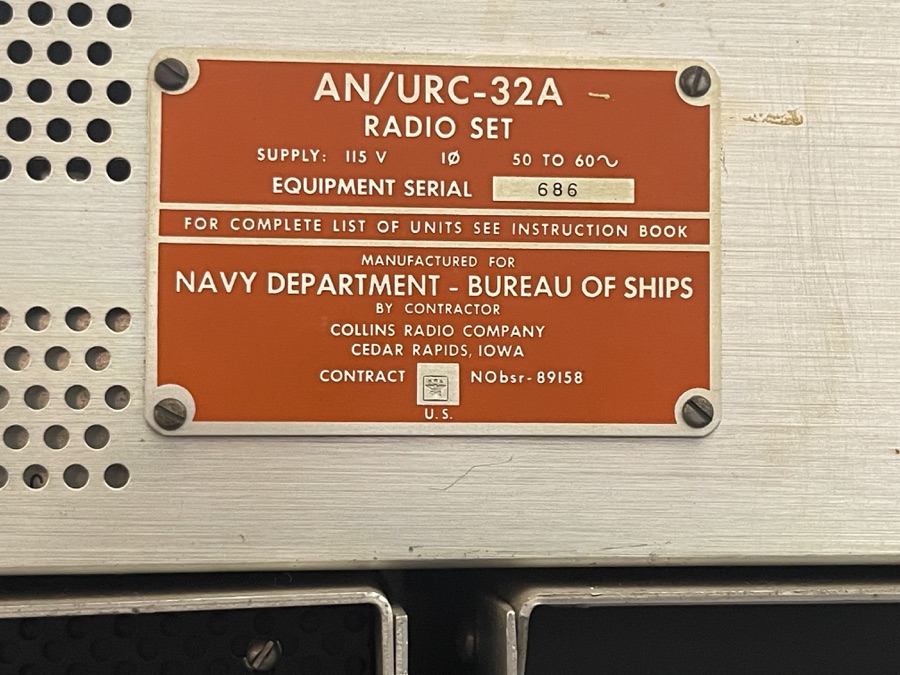
Collins Radio... The very best in the world!
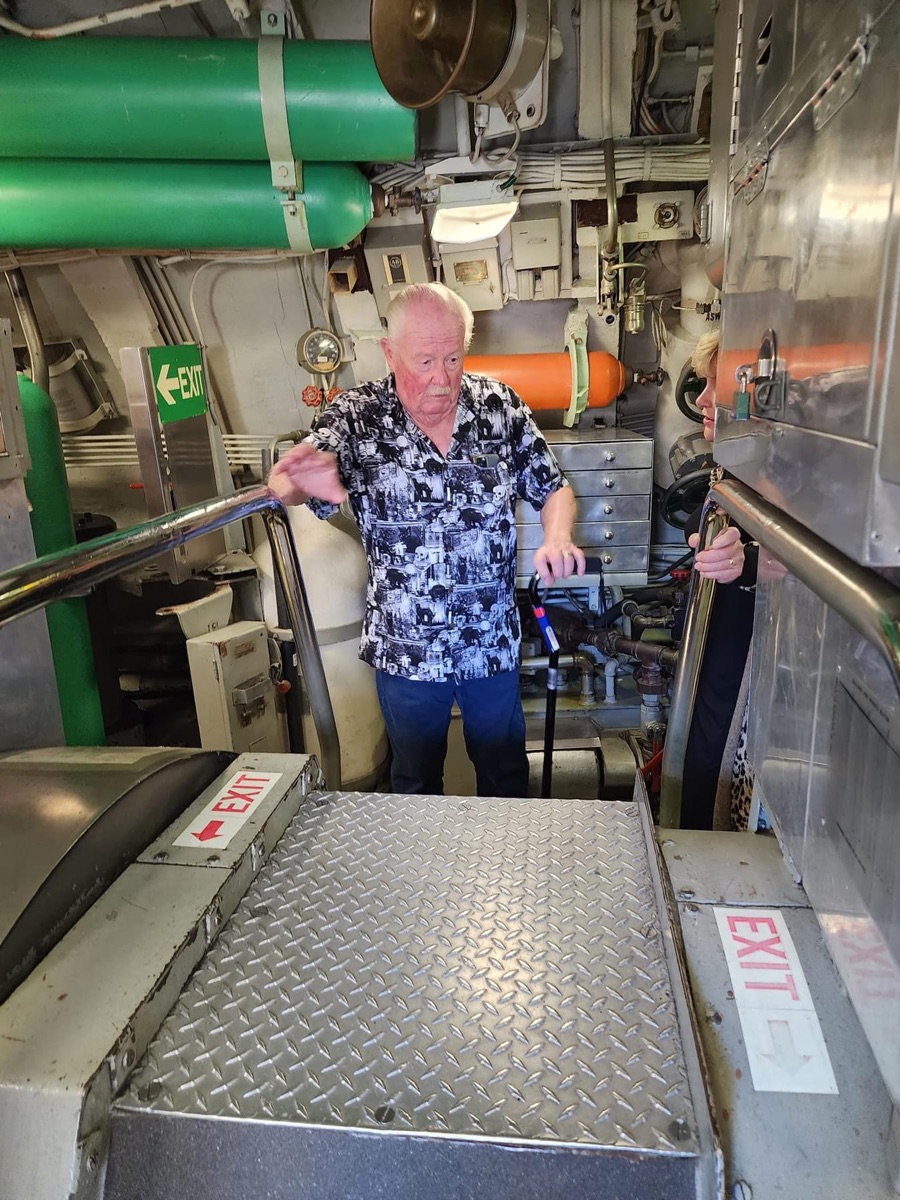
Not great for an old man!
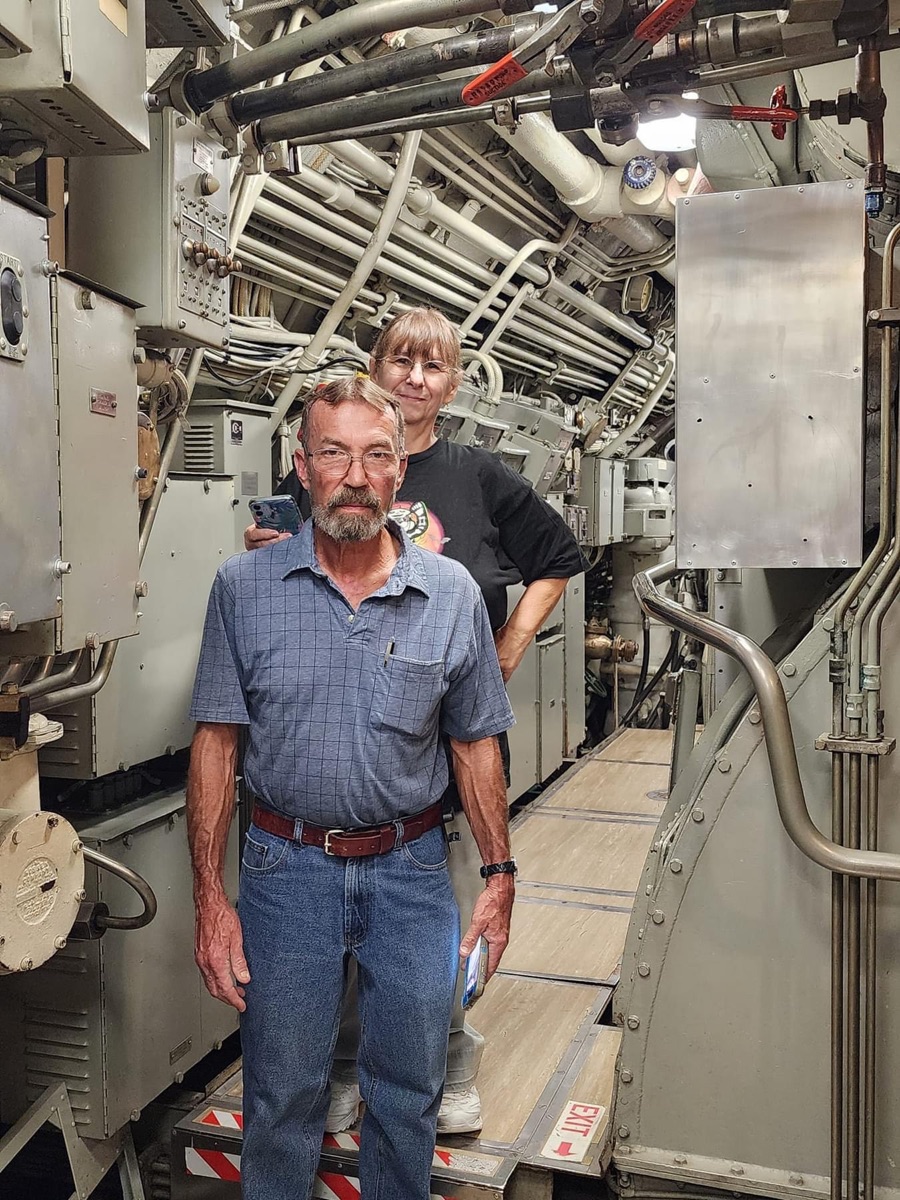
We have been taken over by pirates.


A beautiful setting.

Tribute to submariners from Massachusetts and specifically the Albacore

We walked for a while before heading for home.
